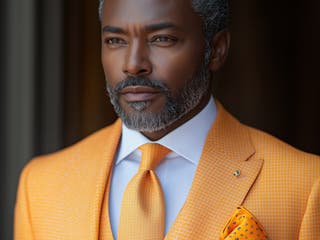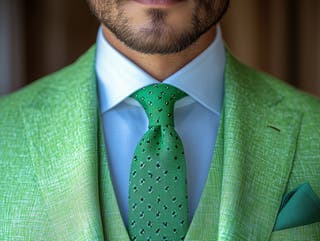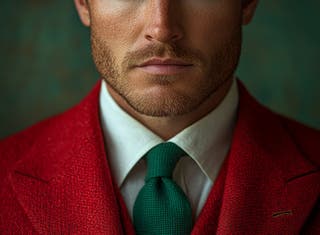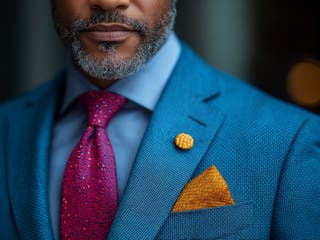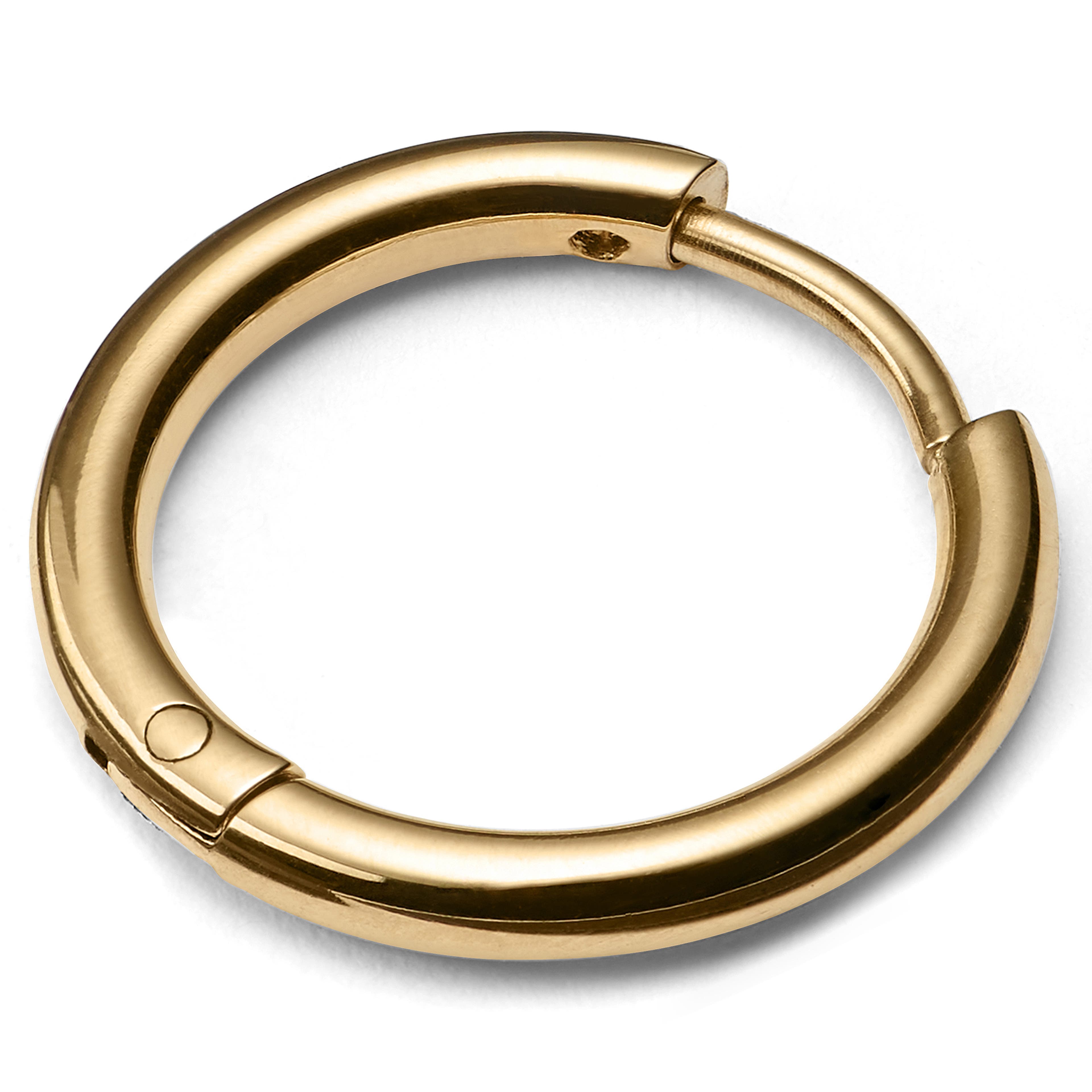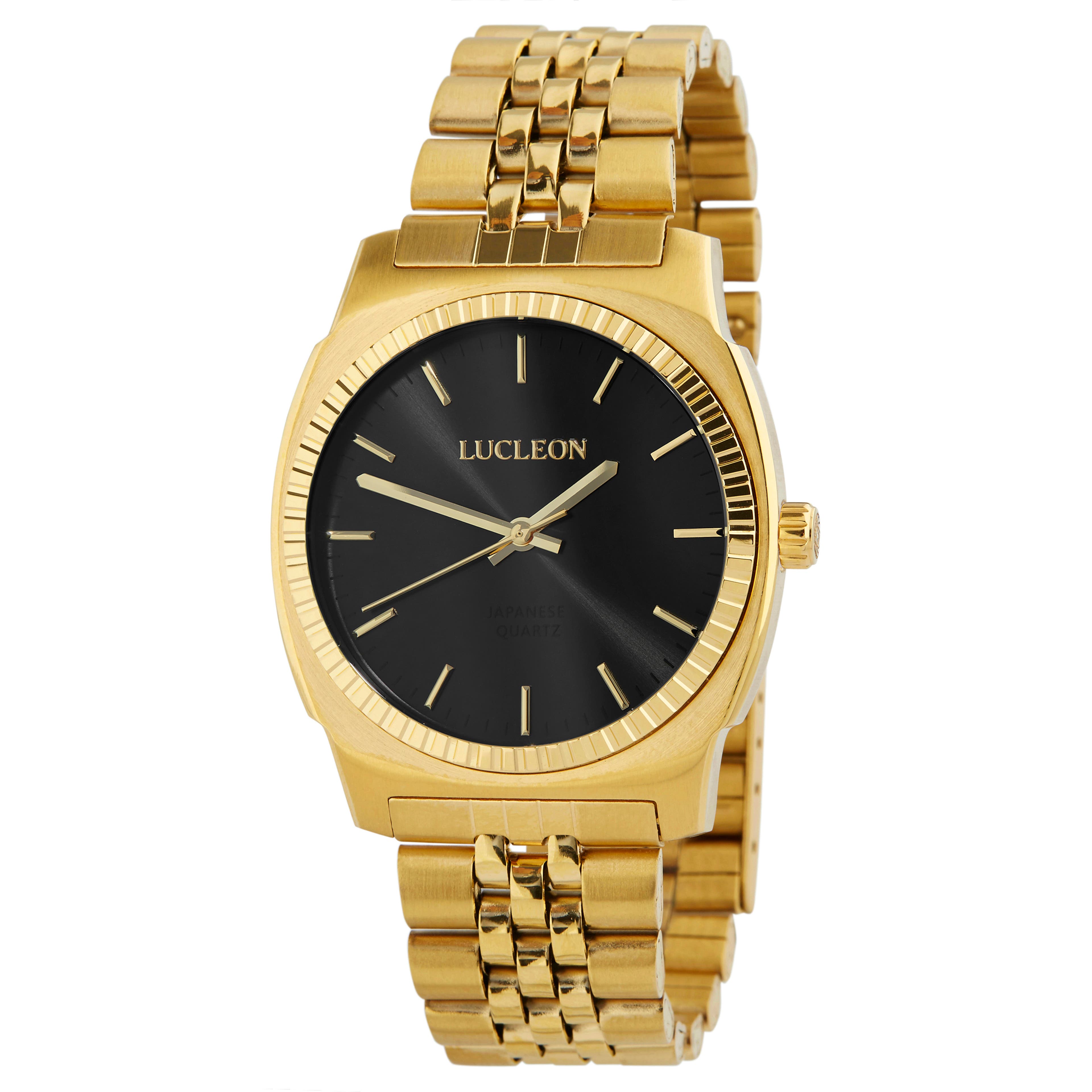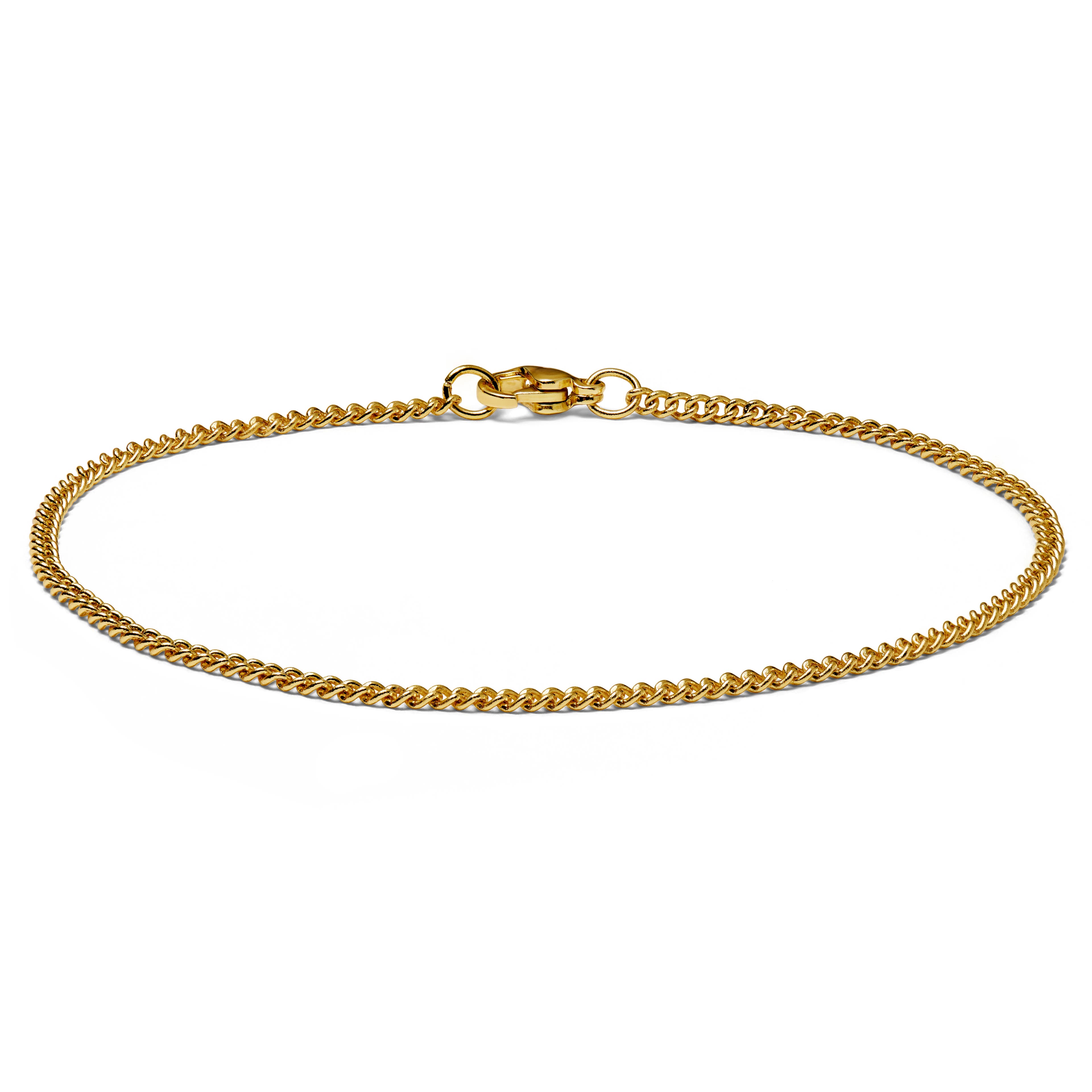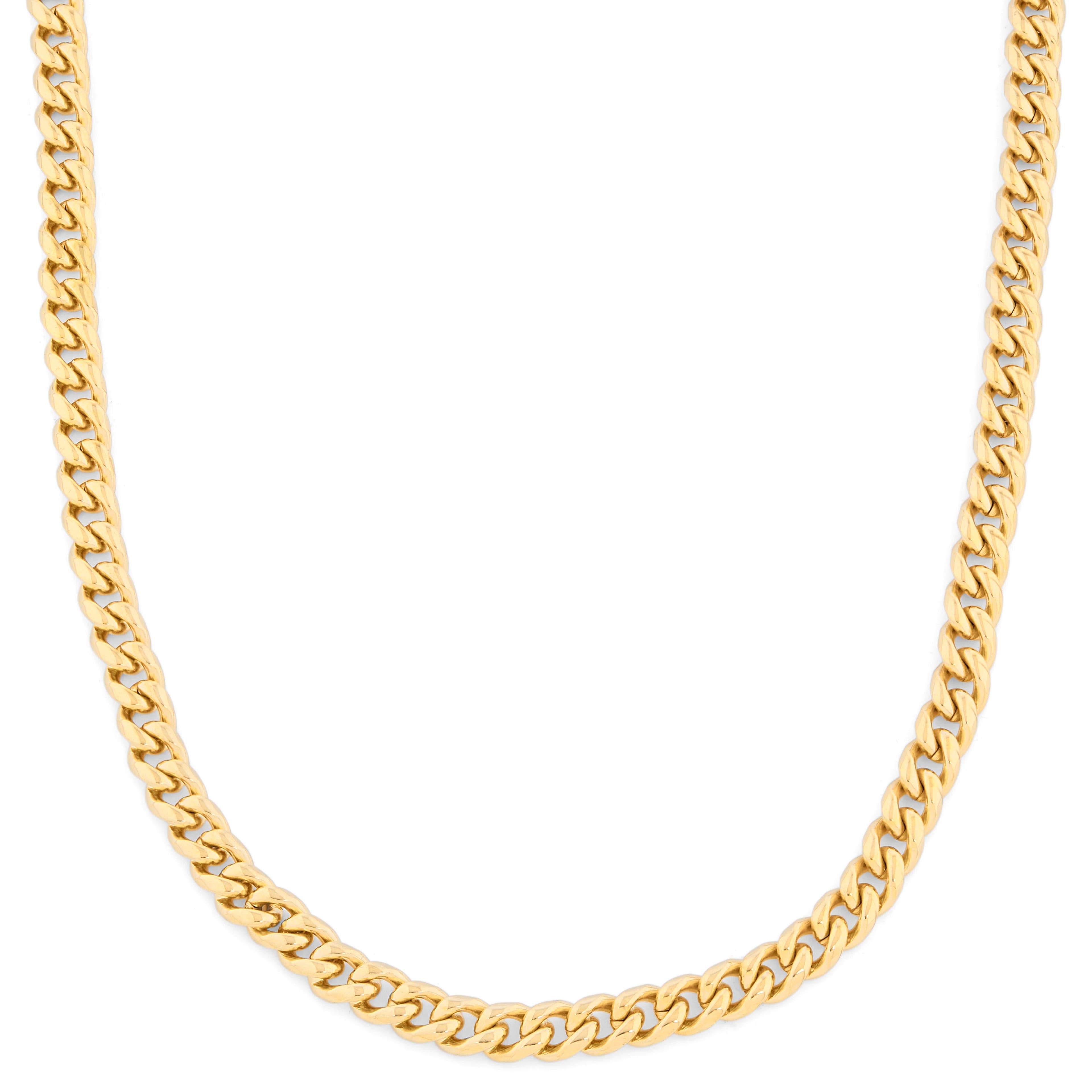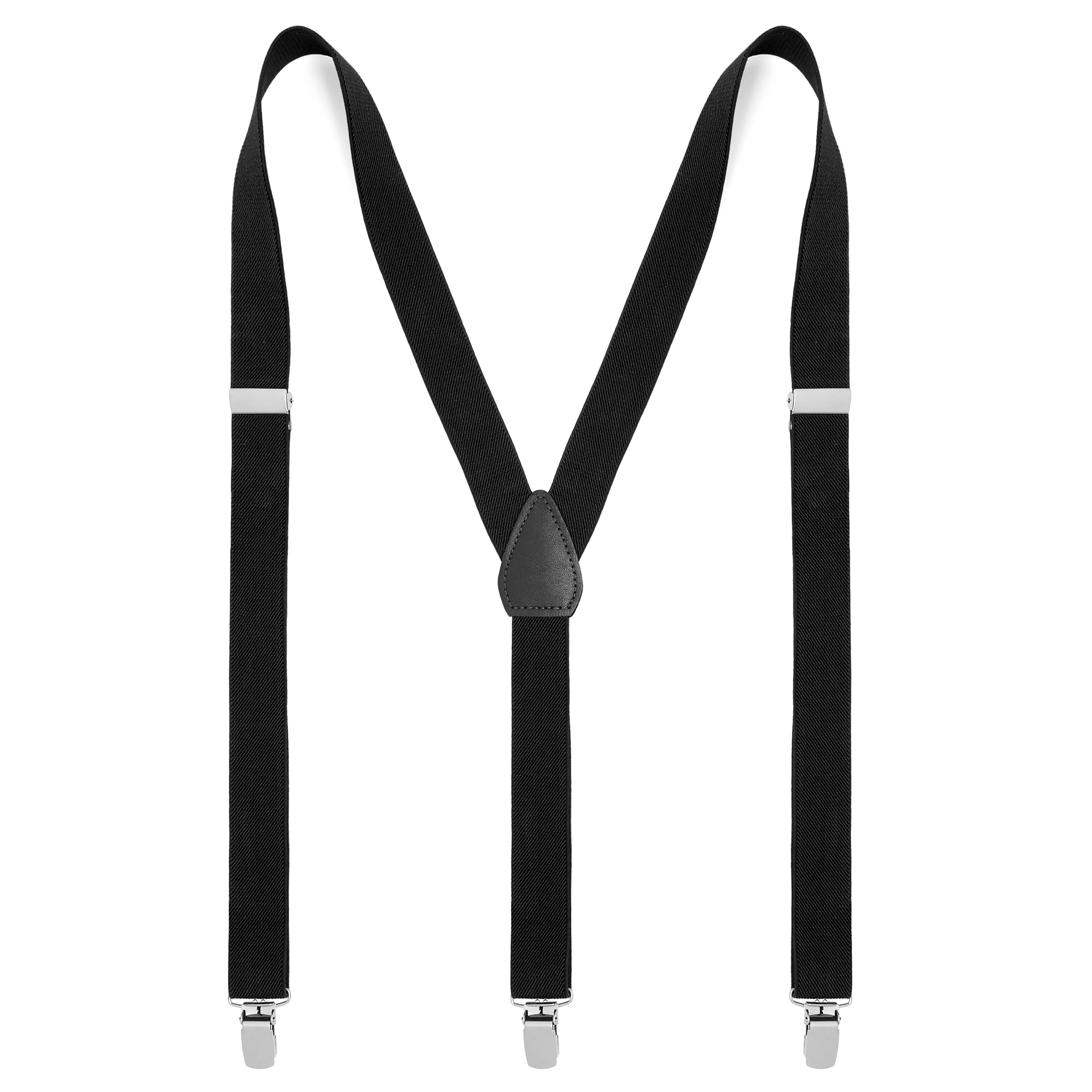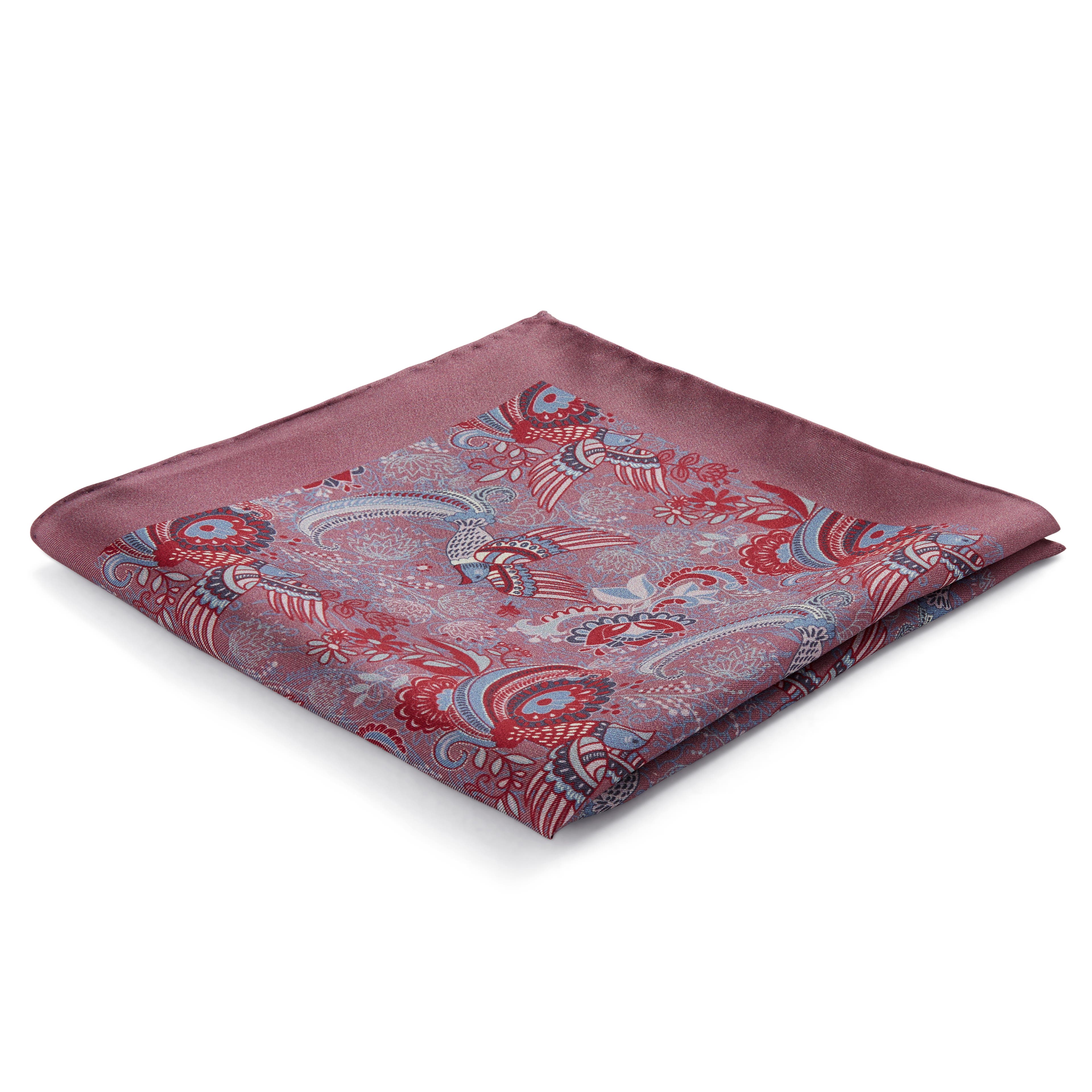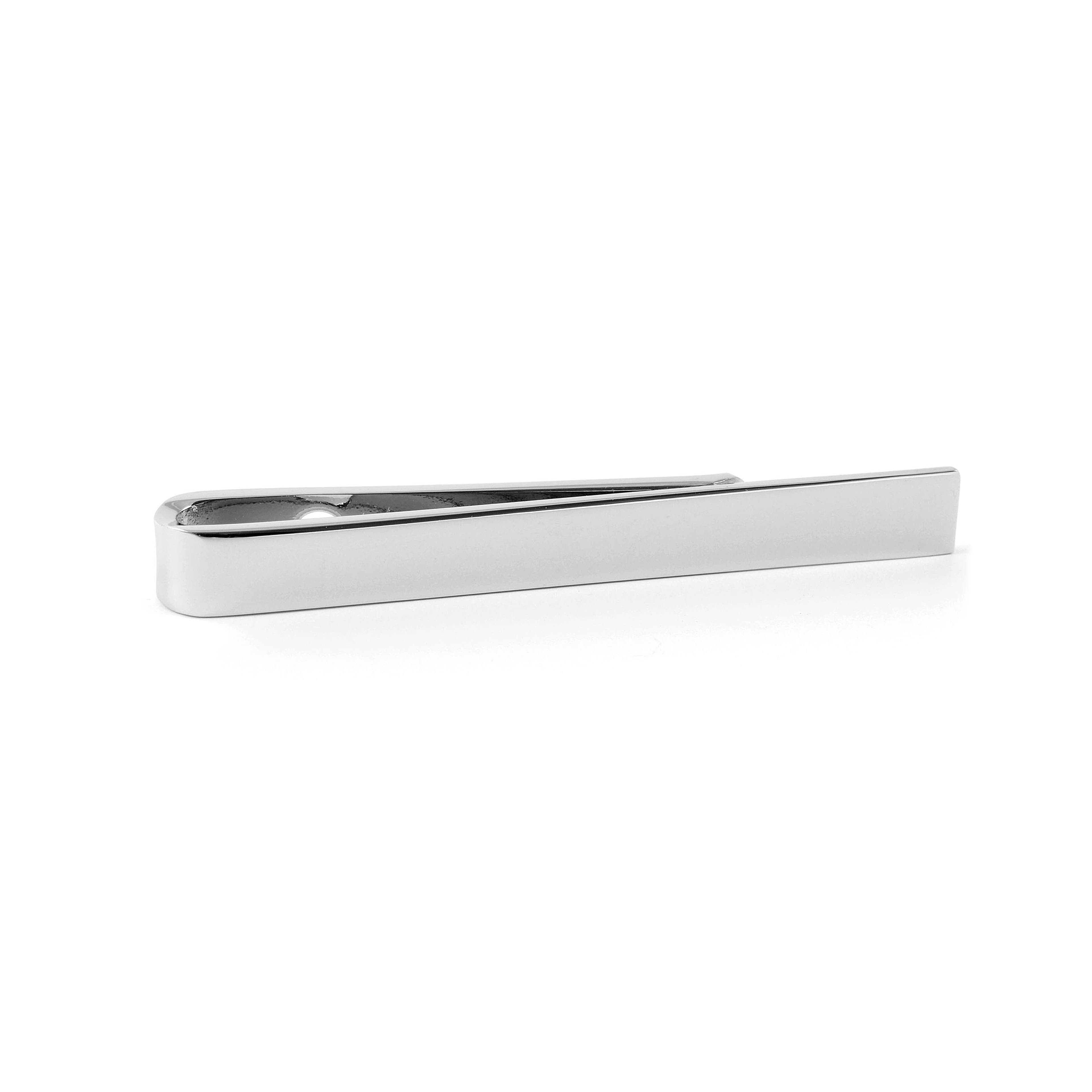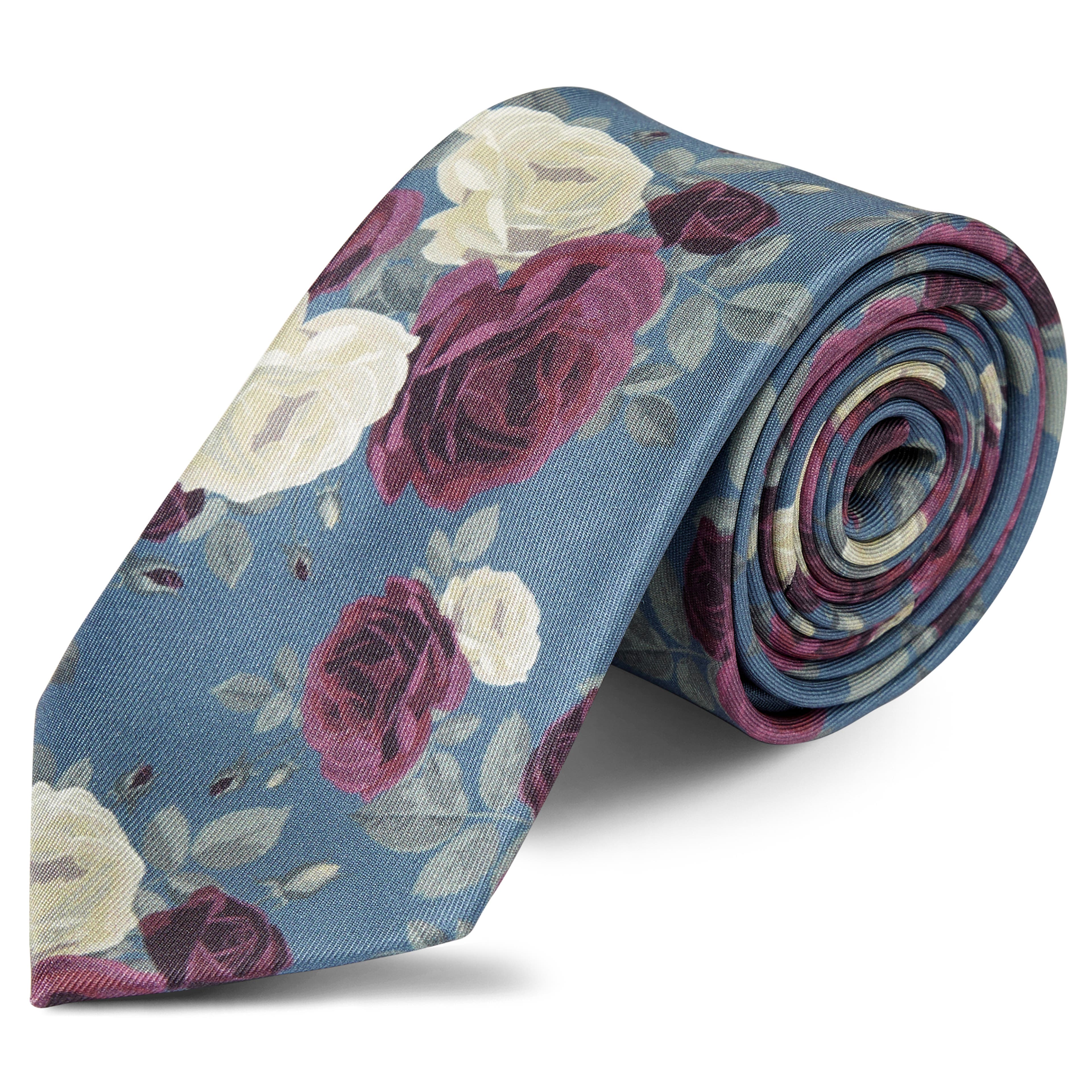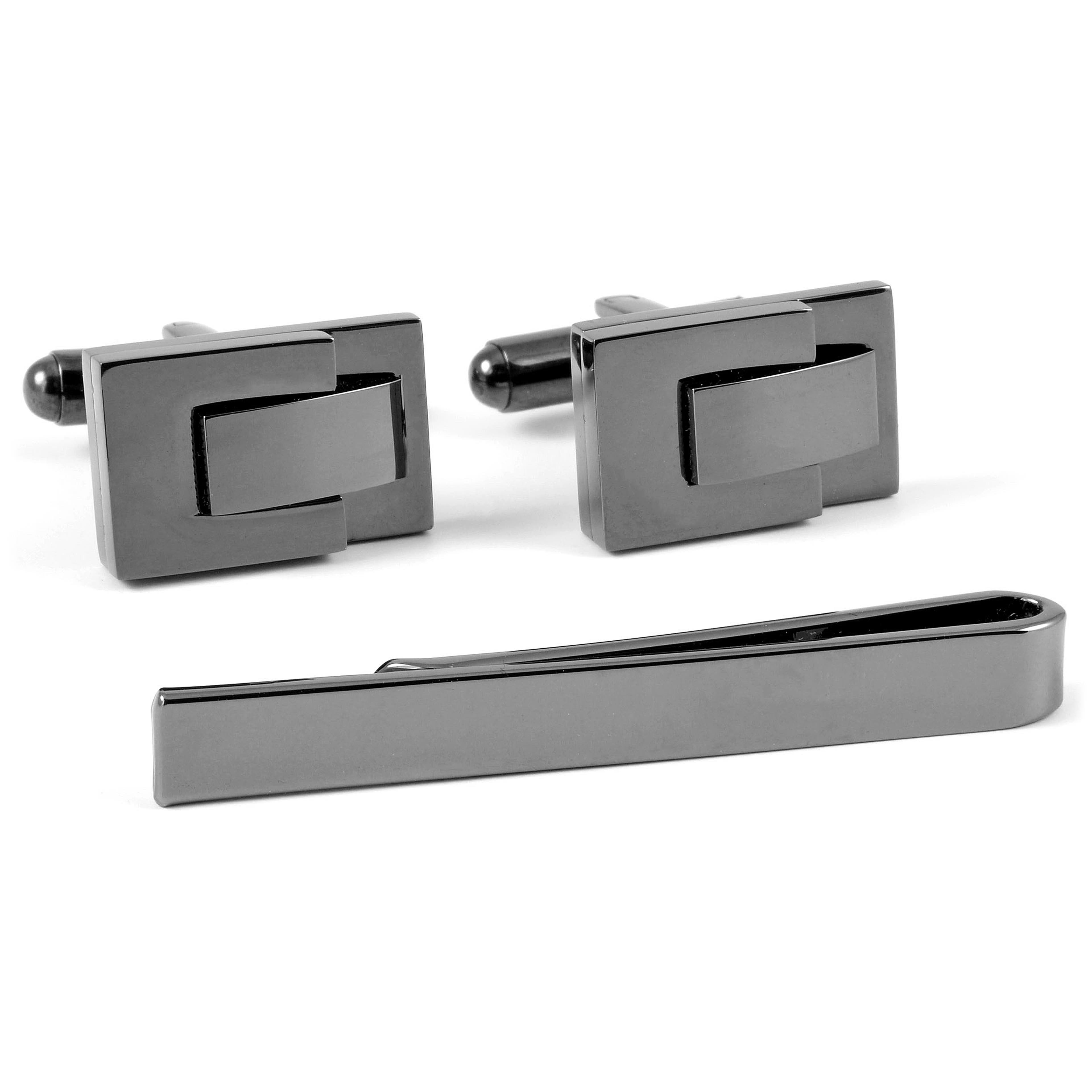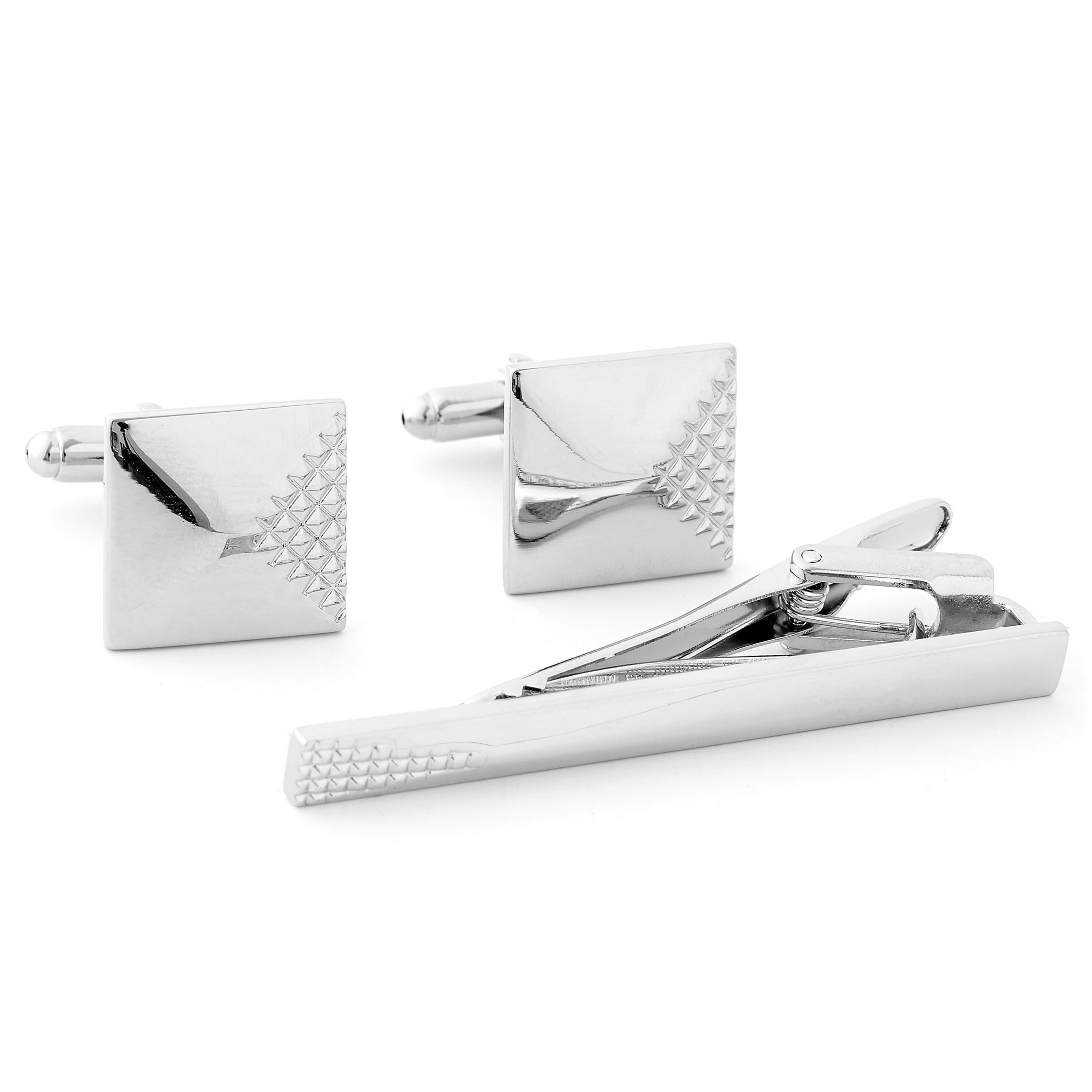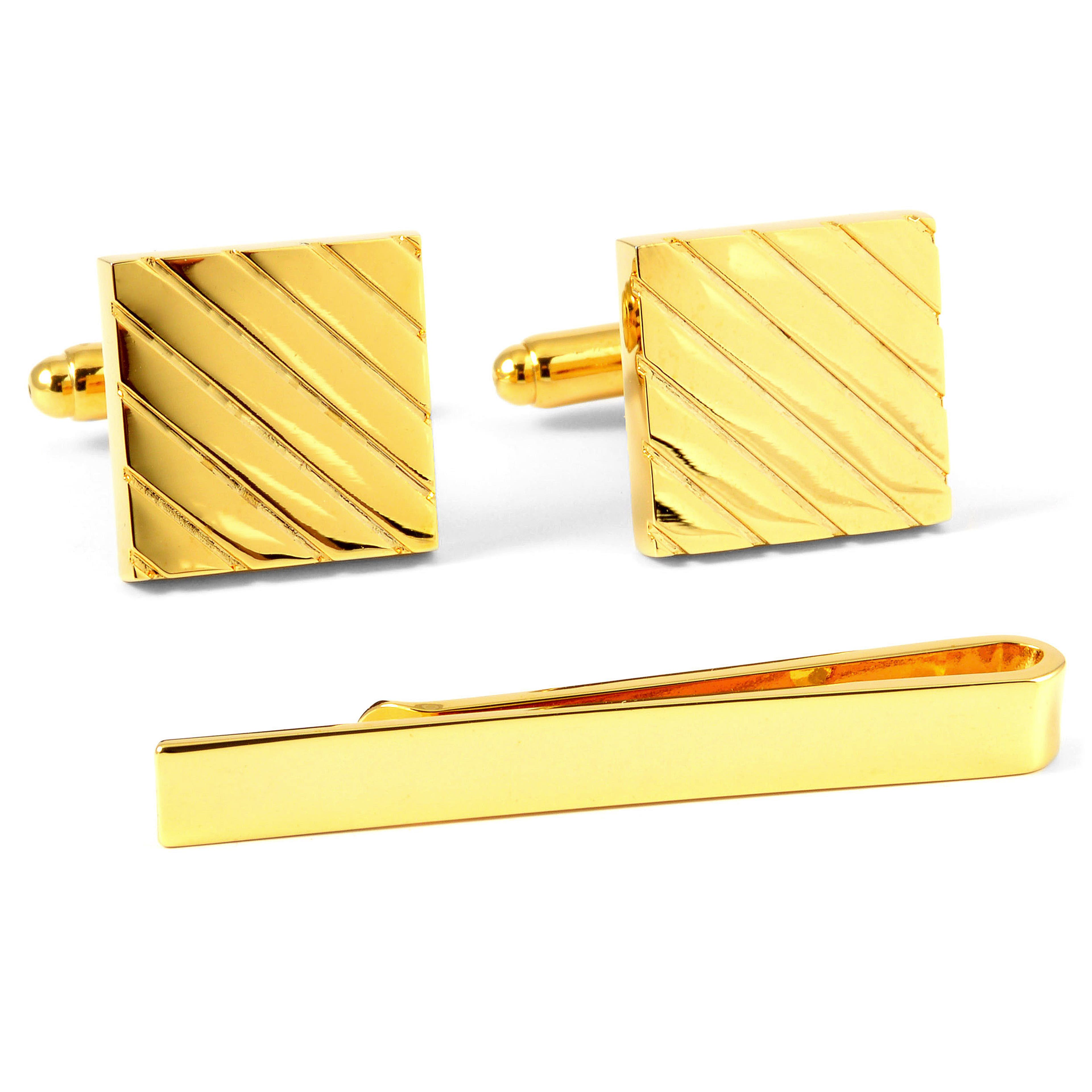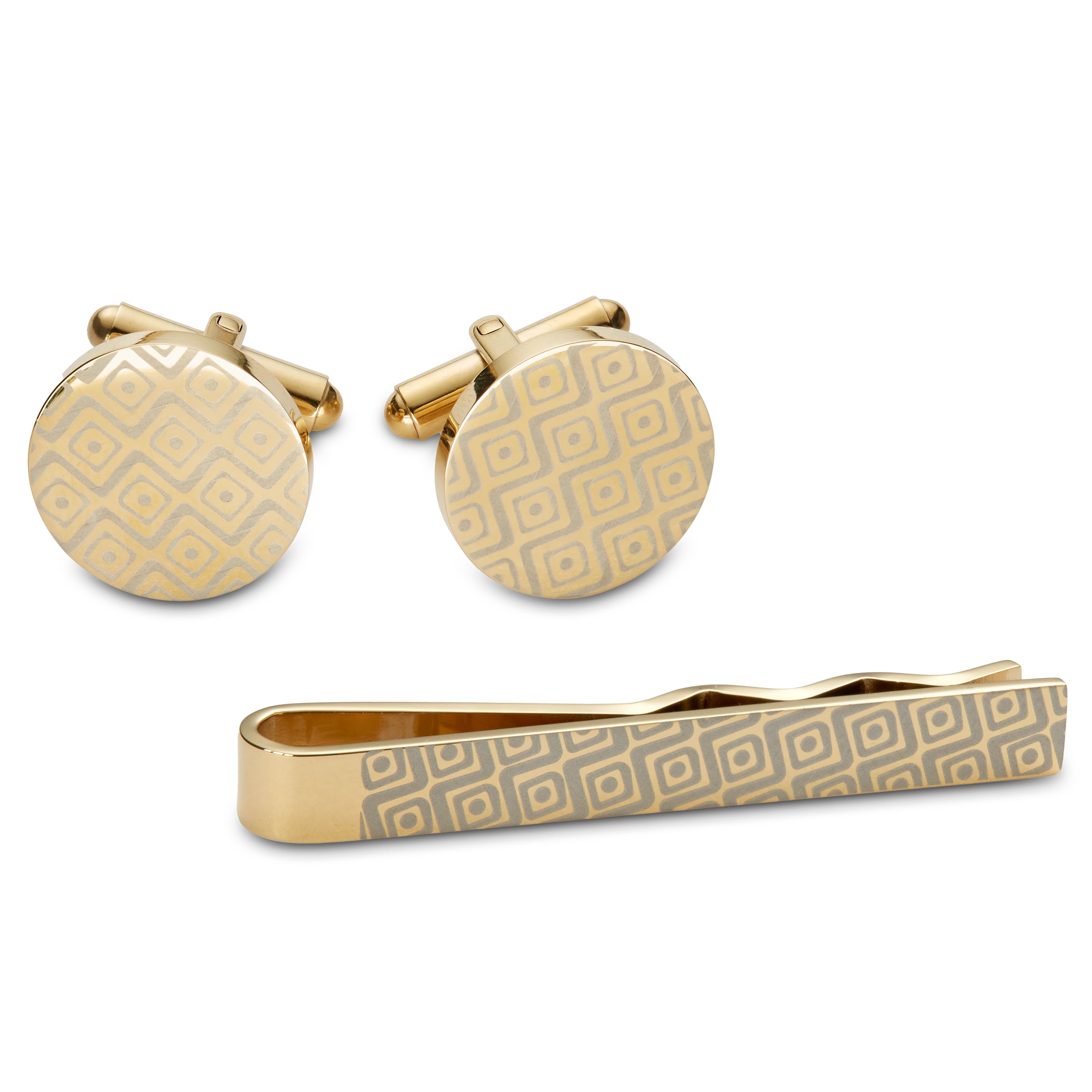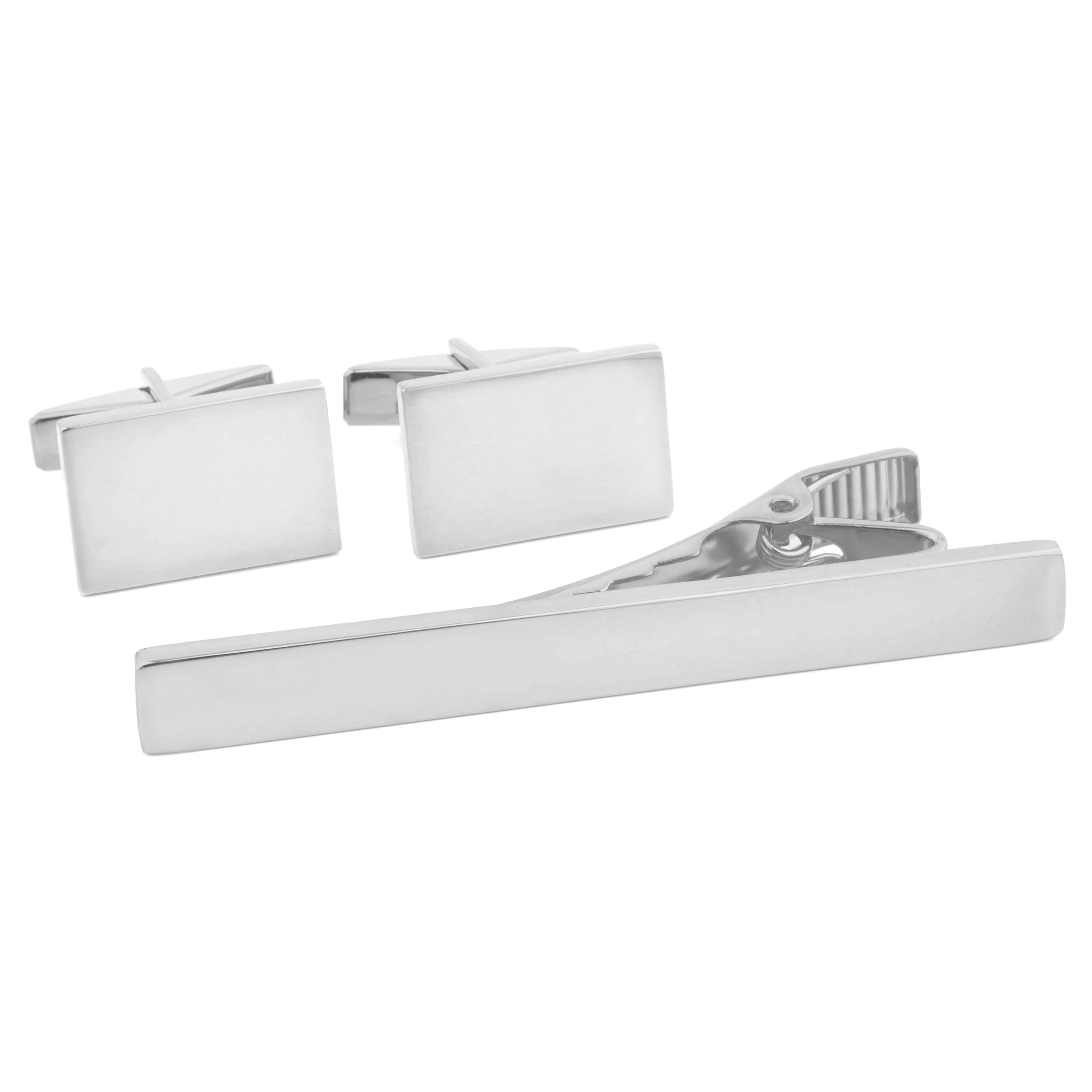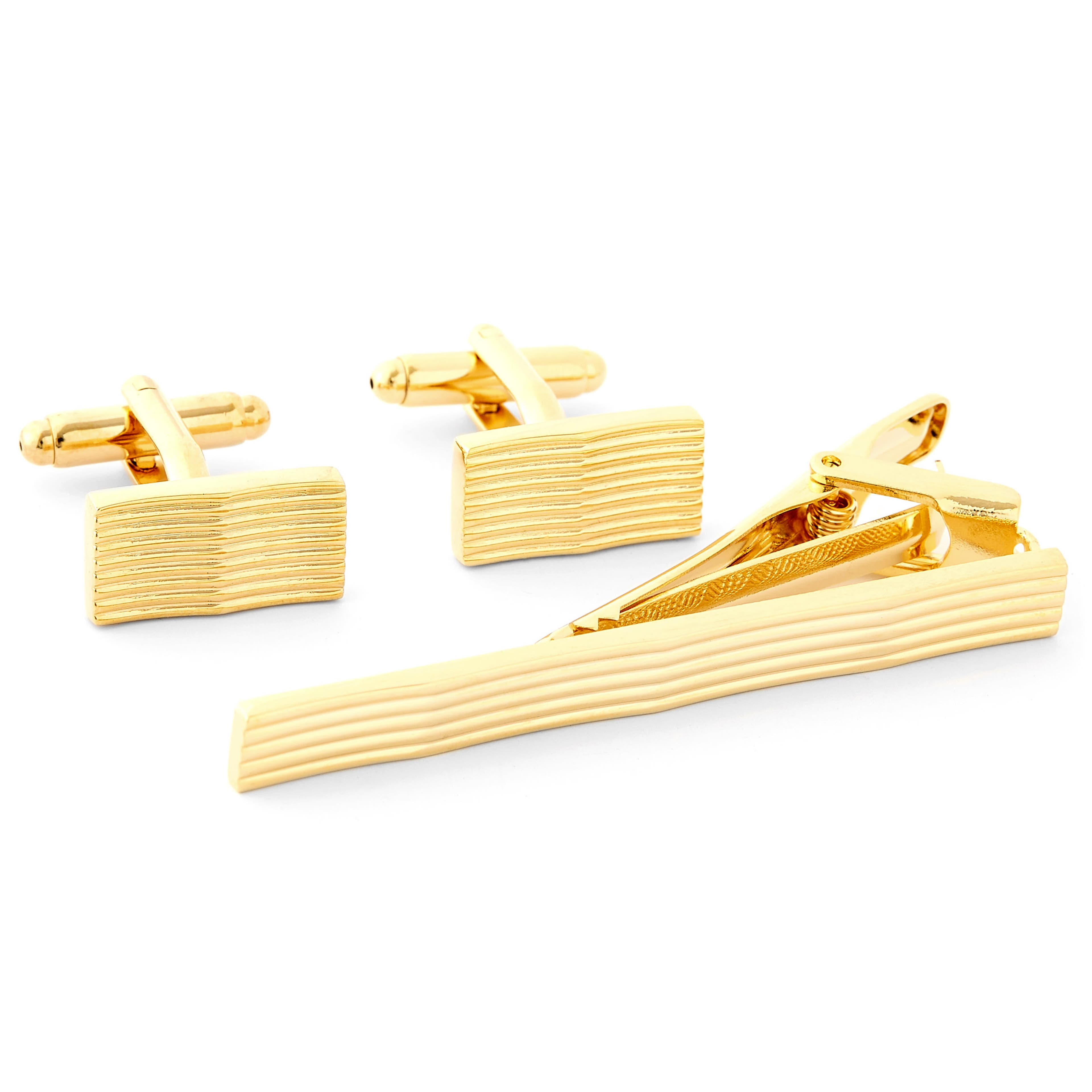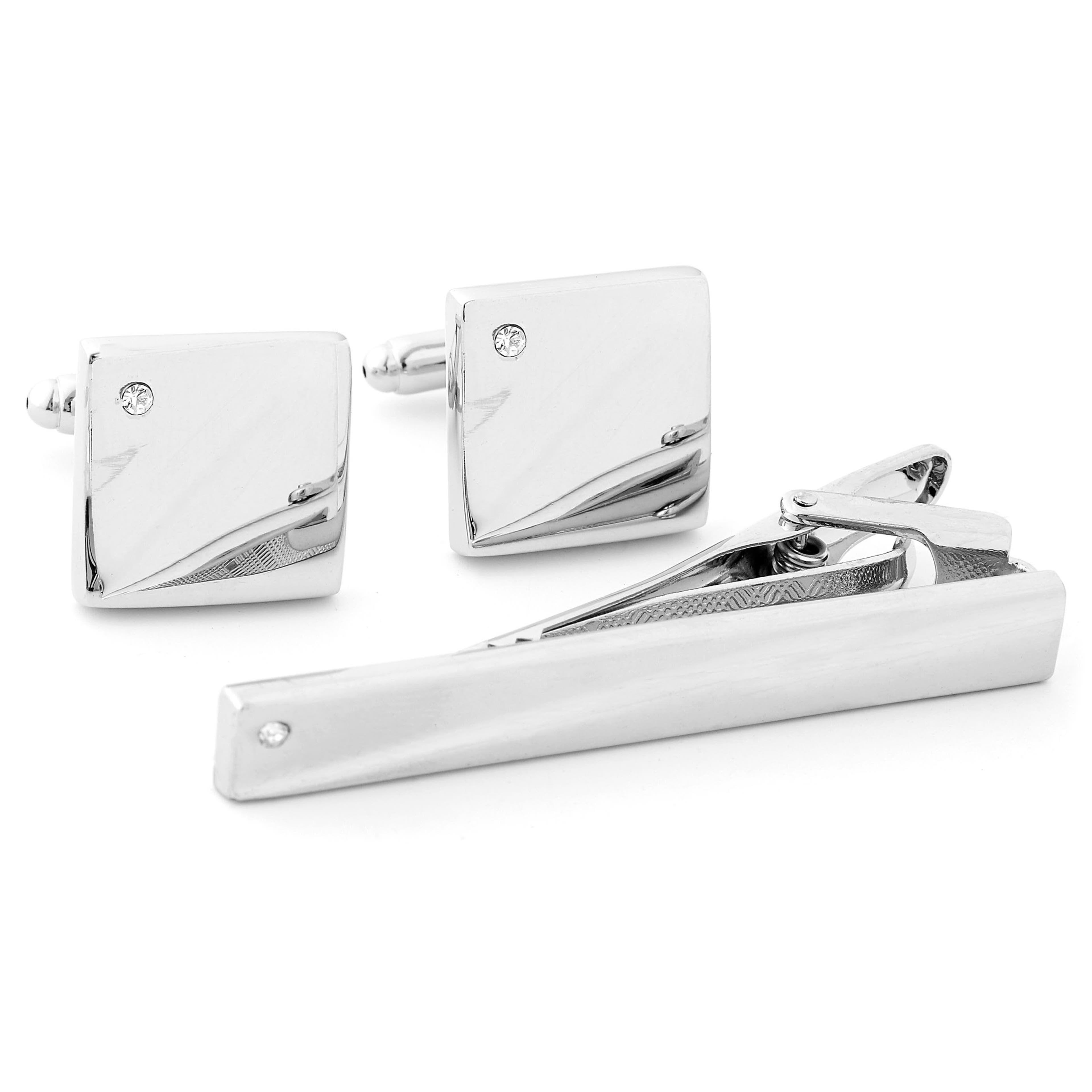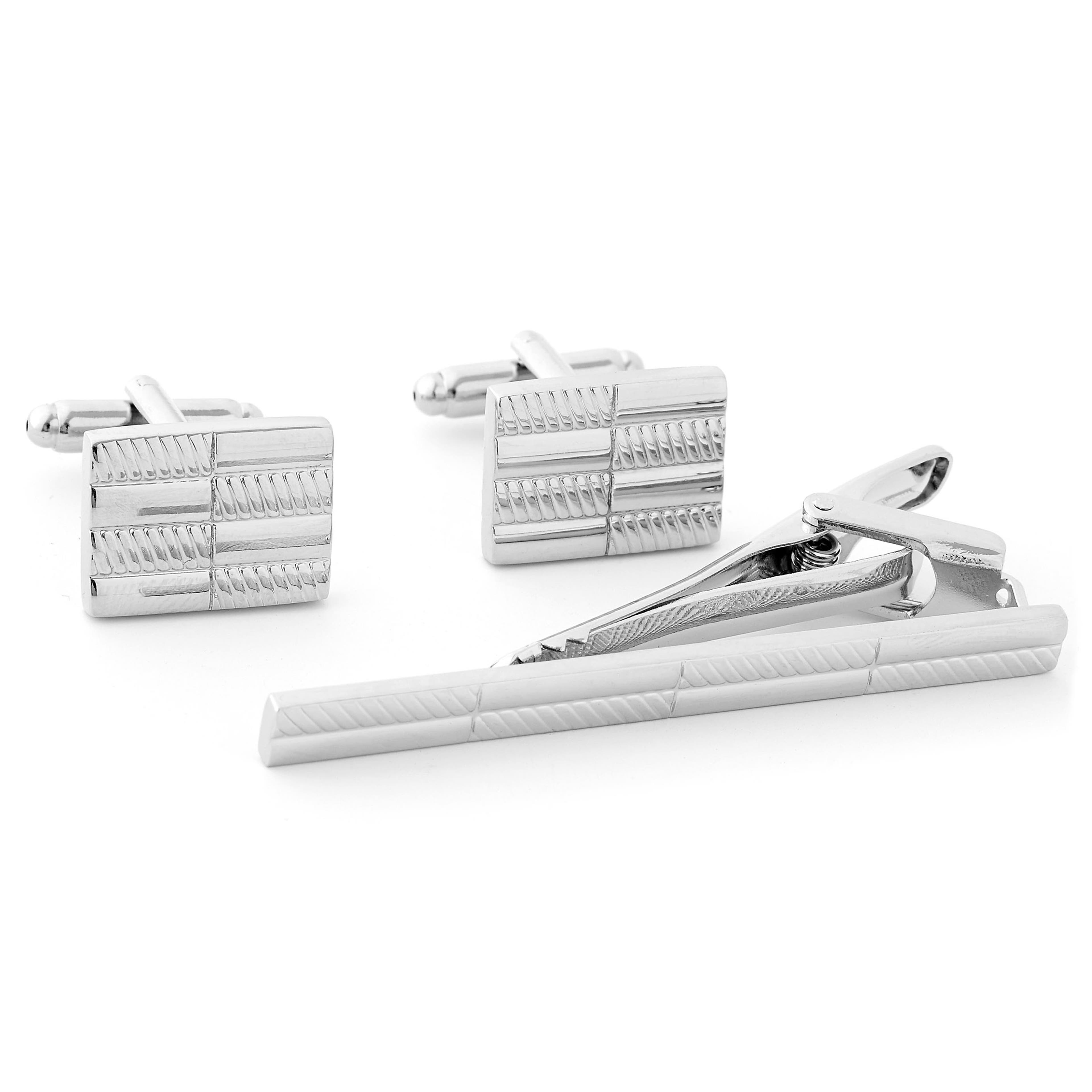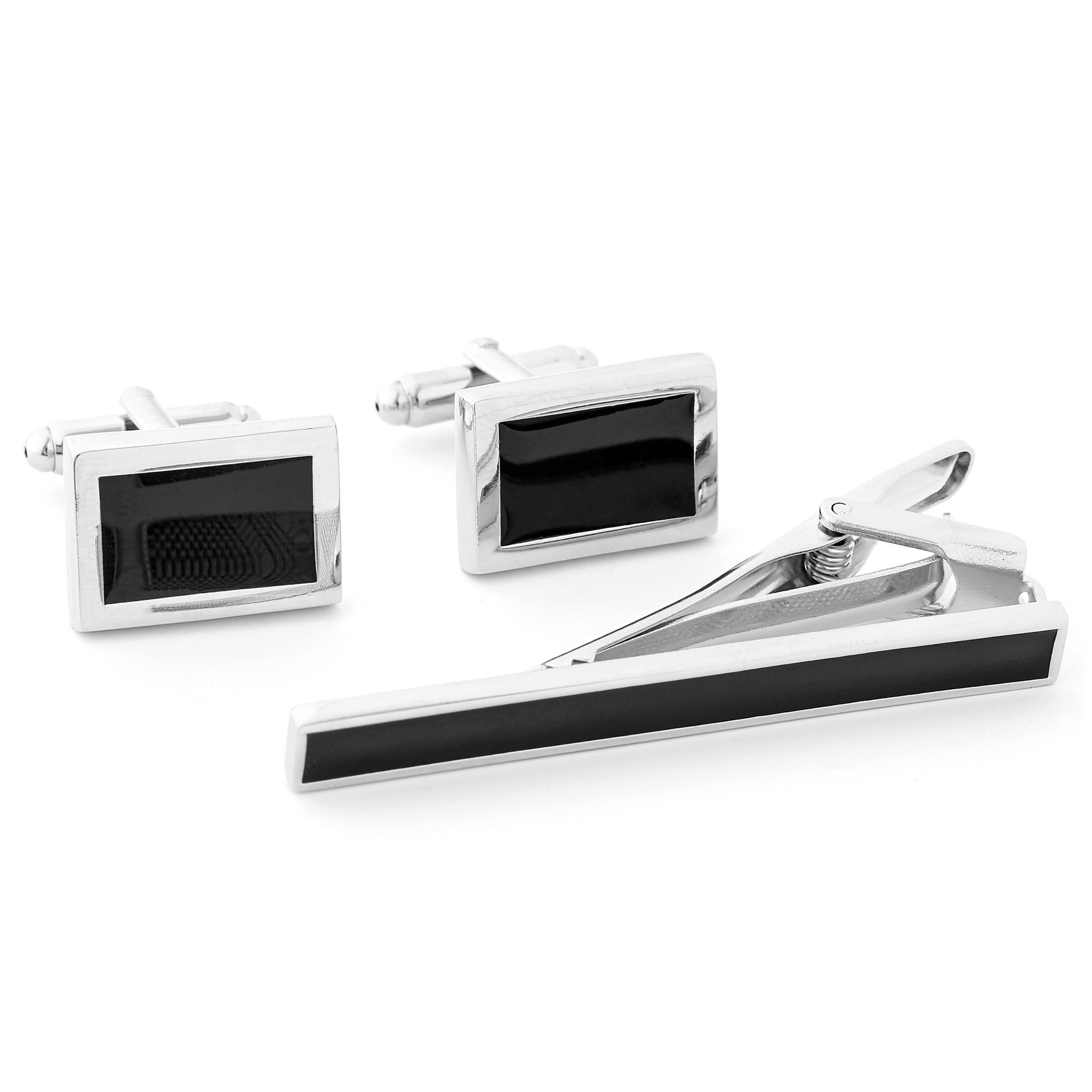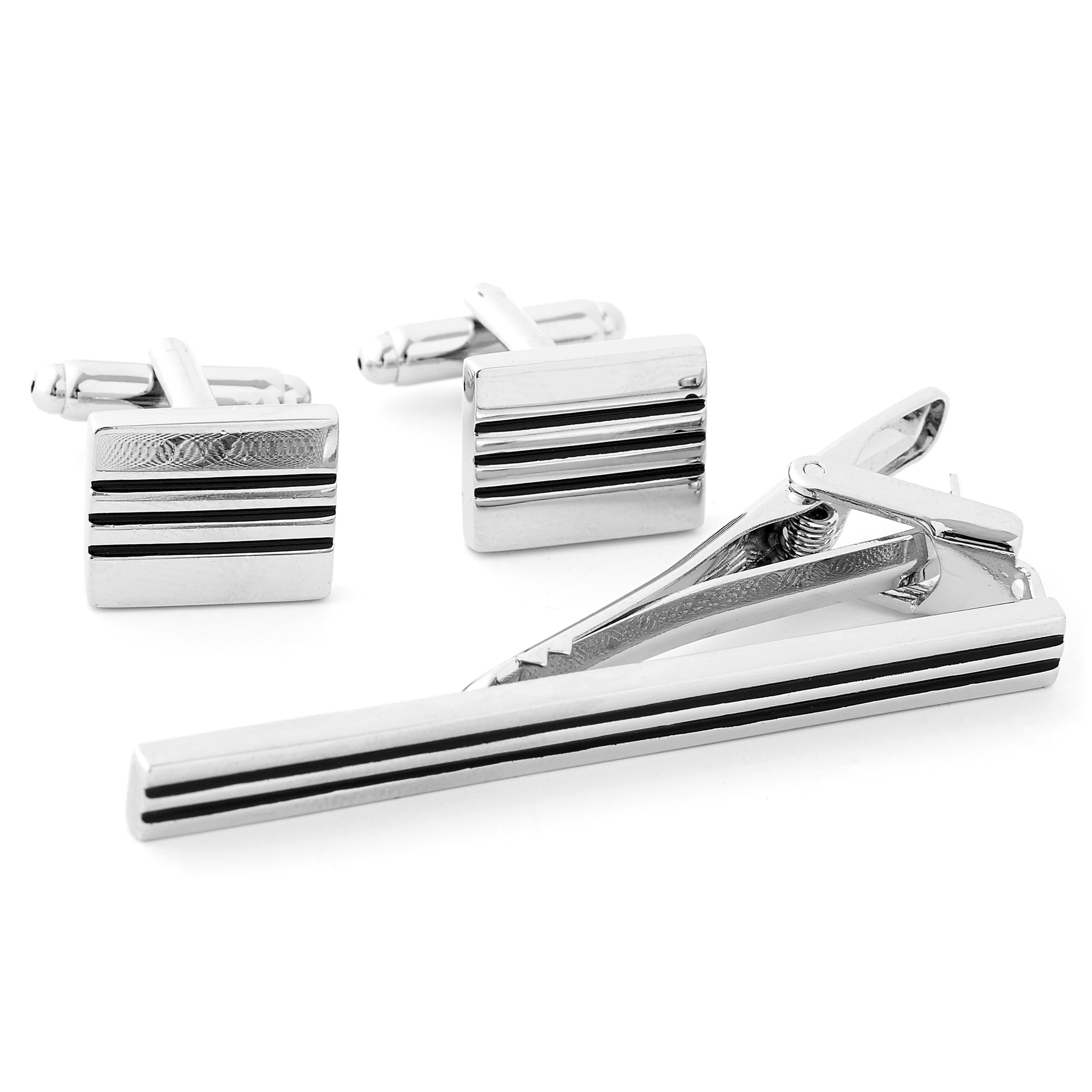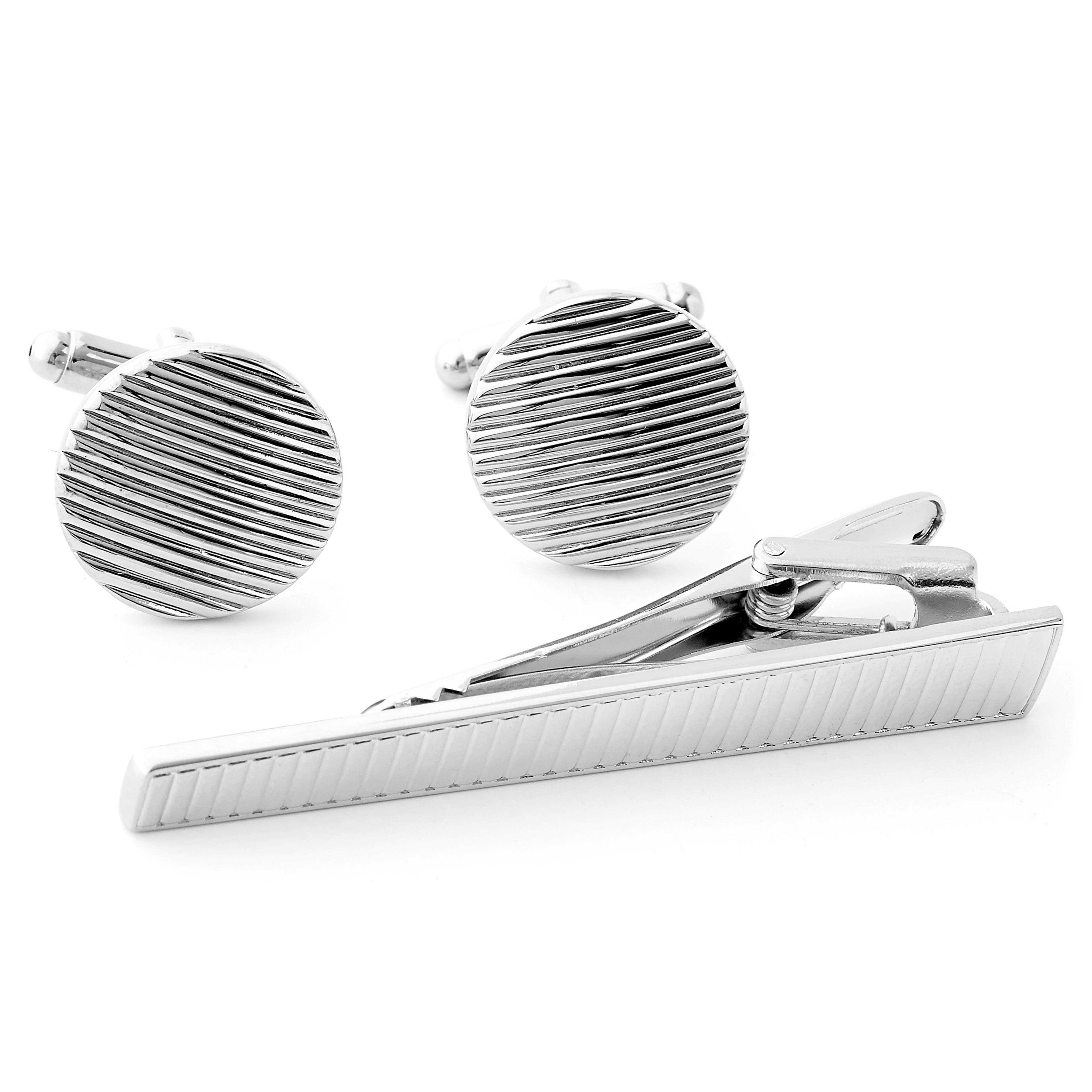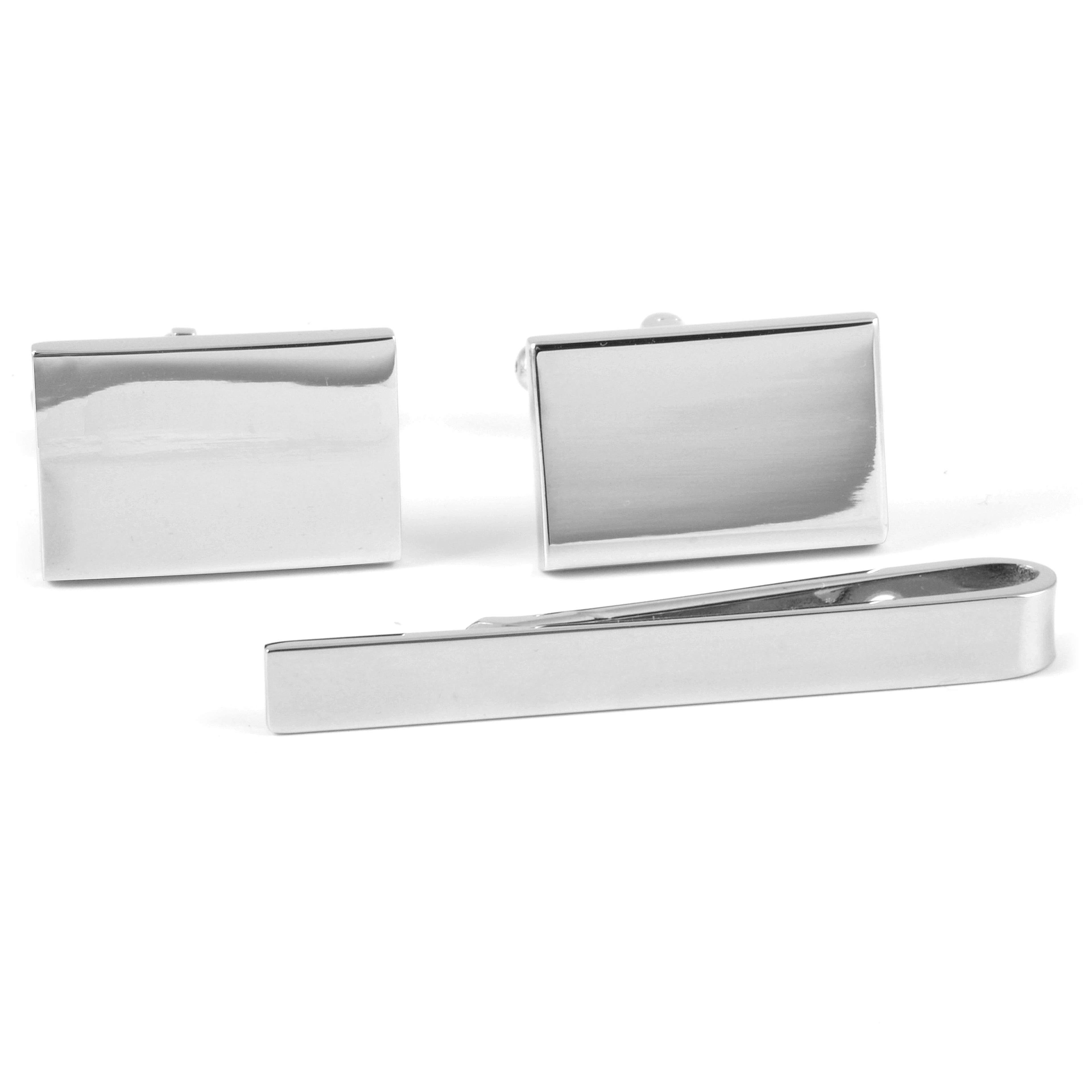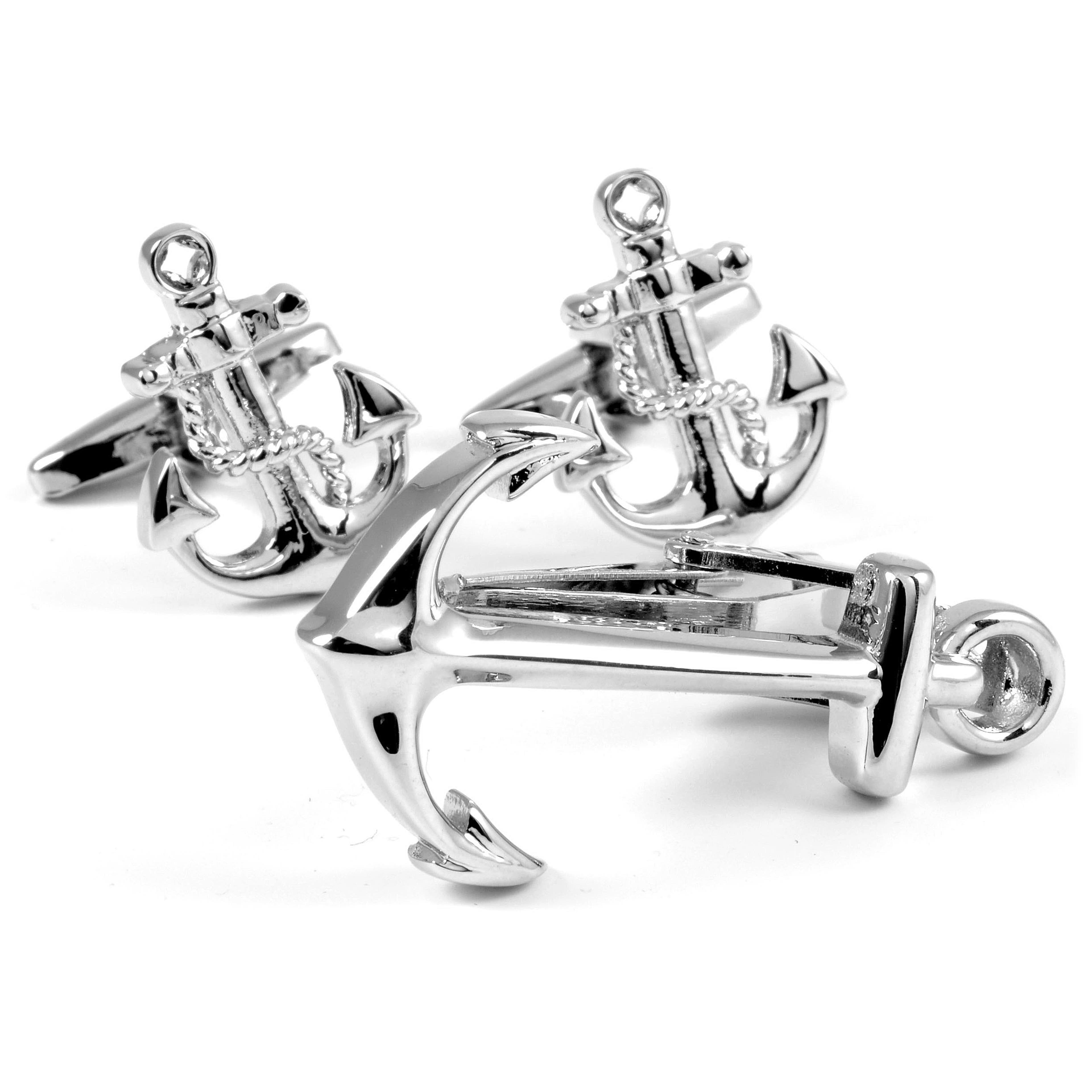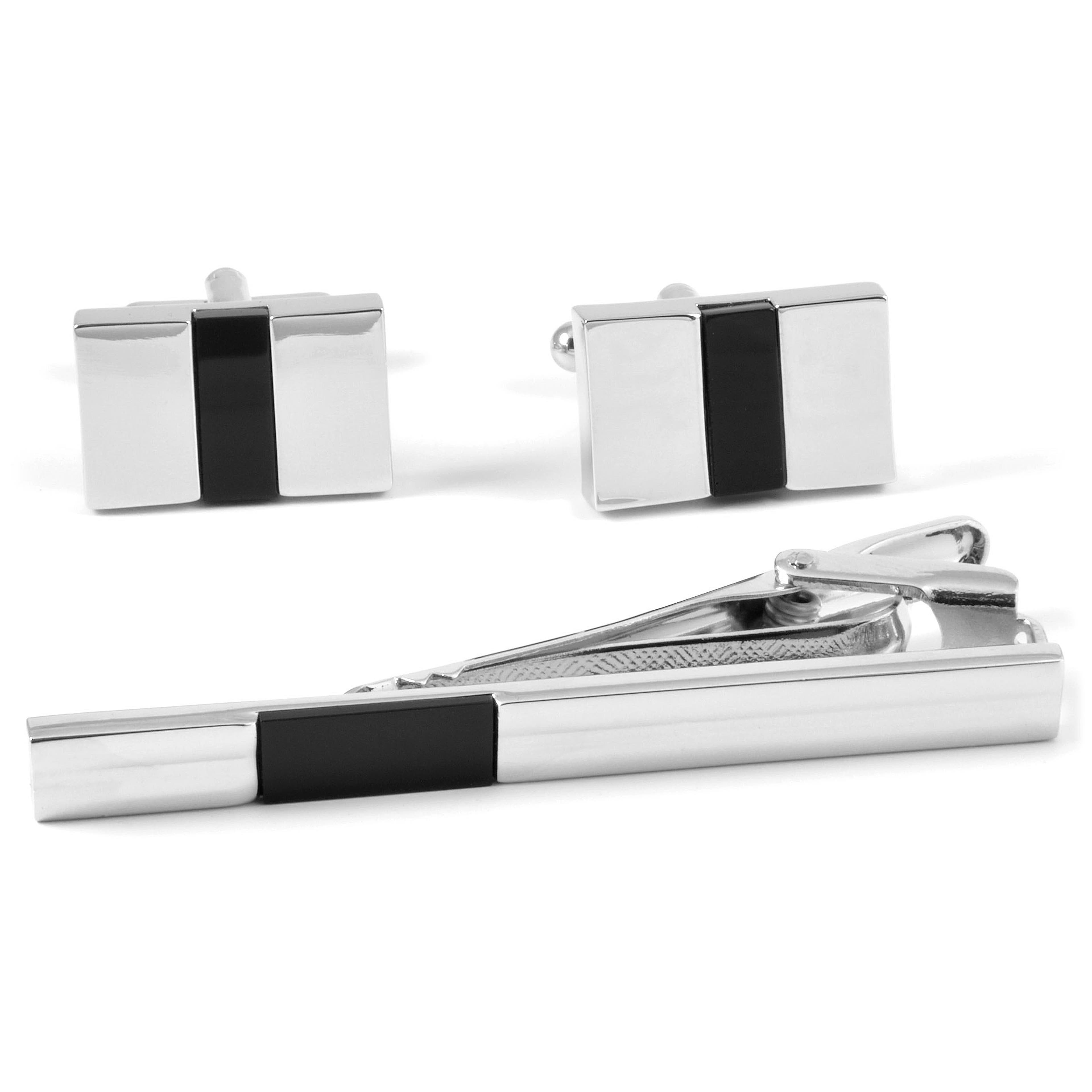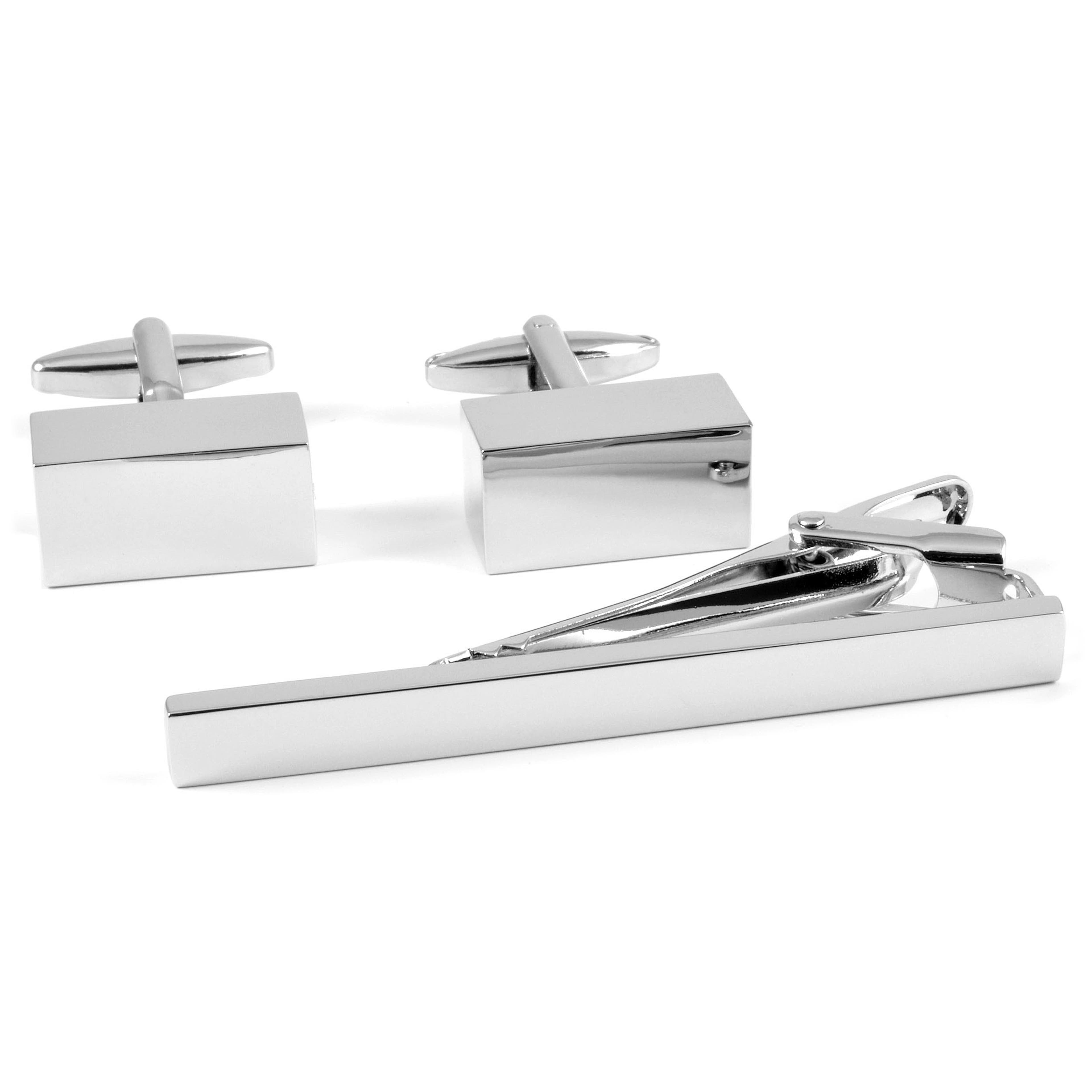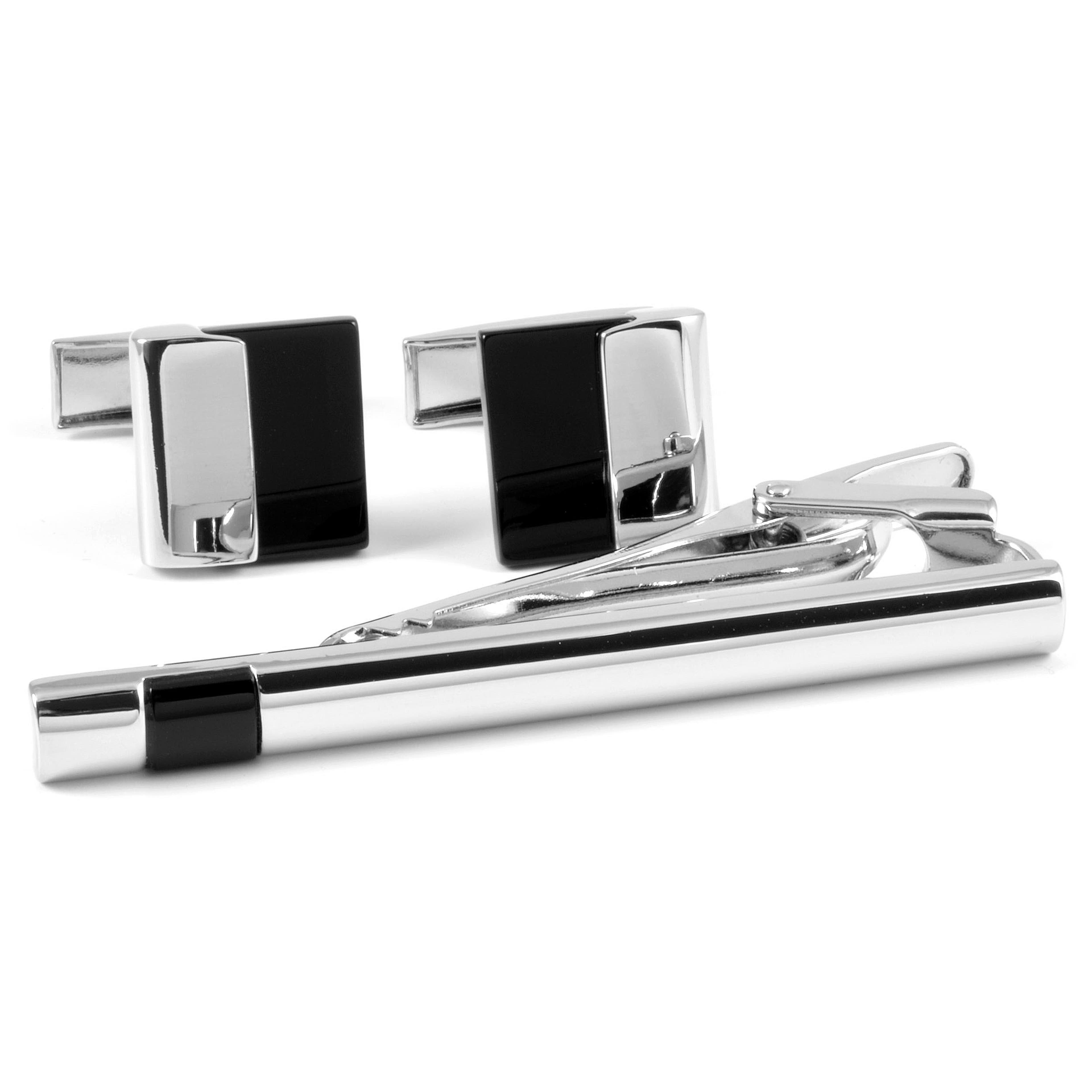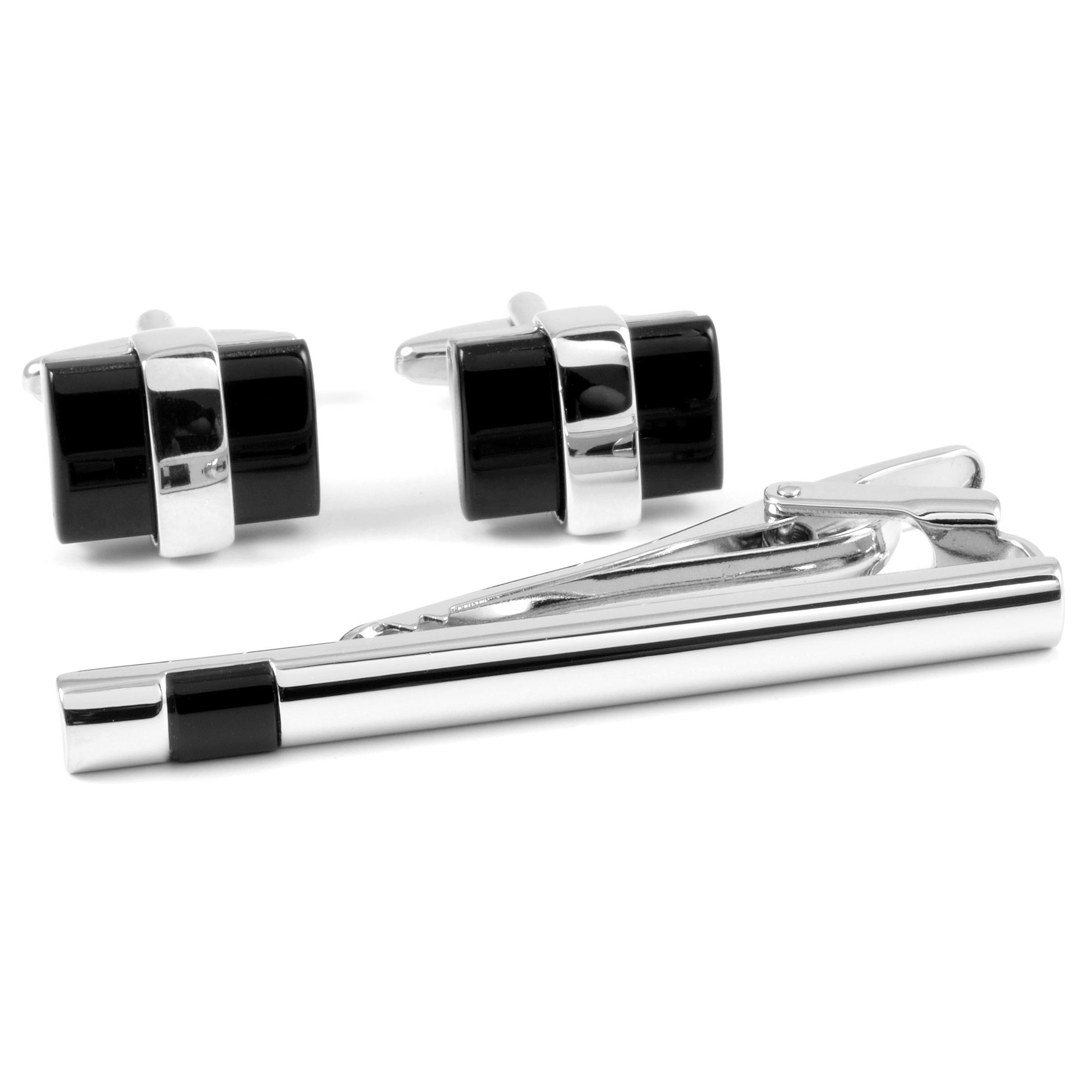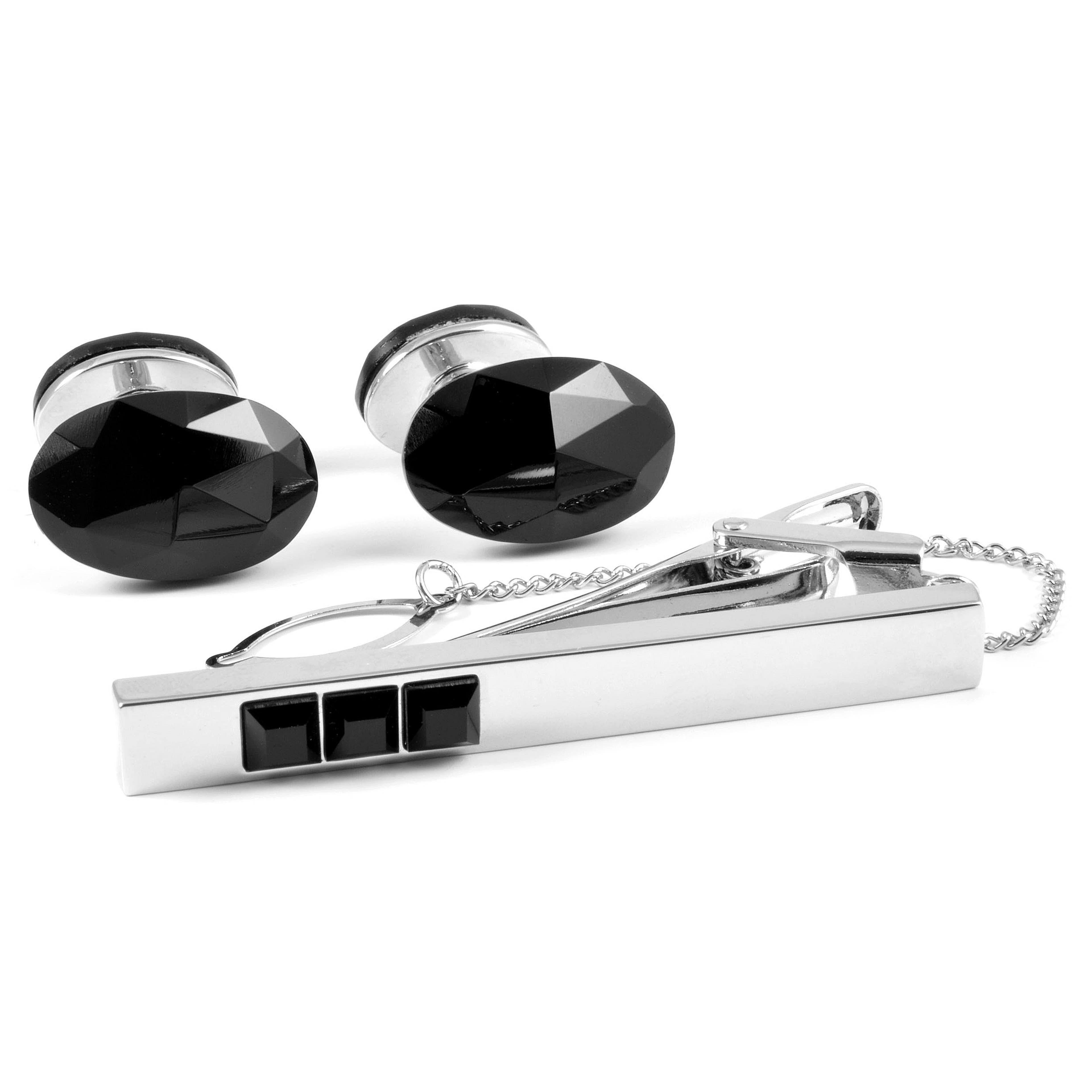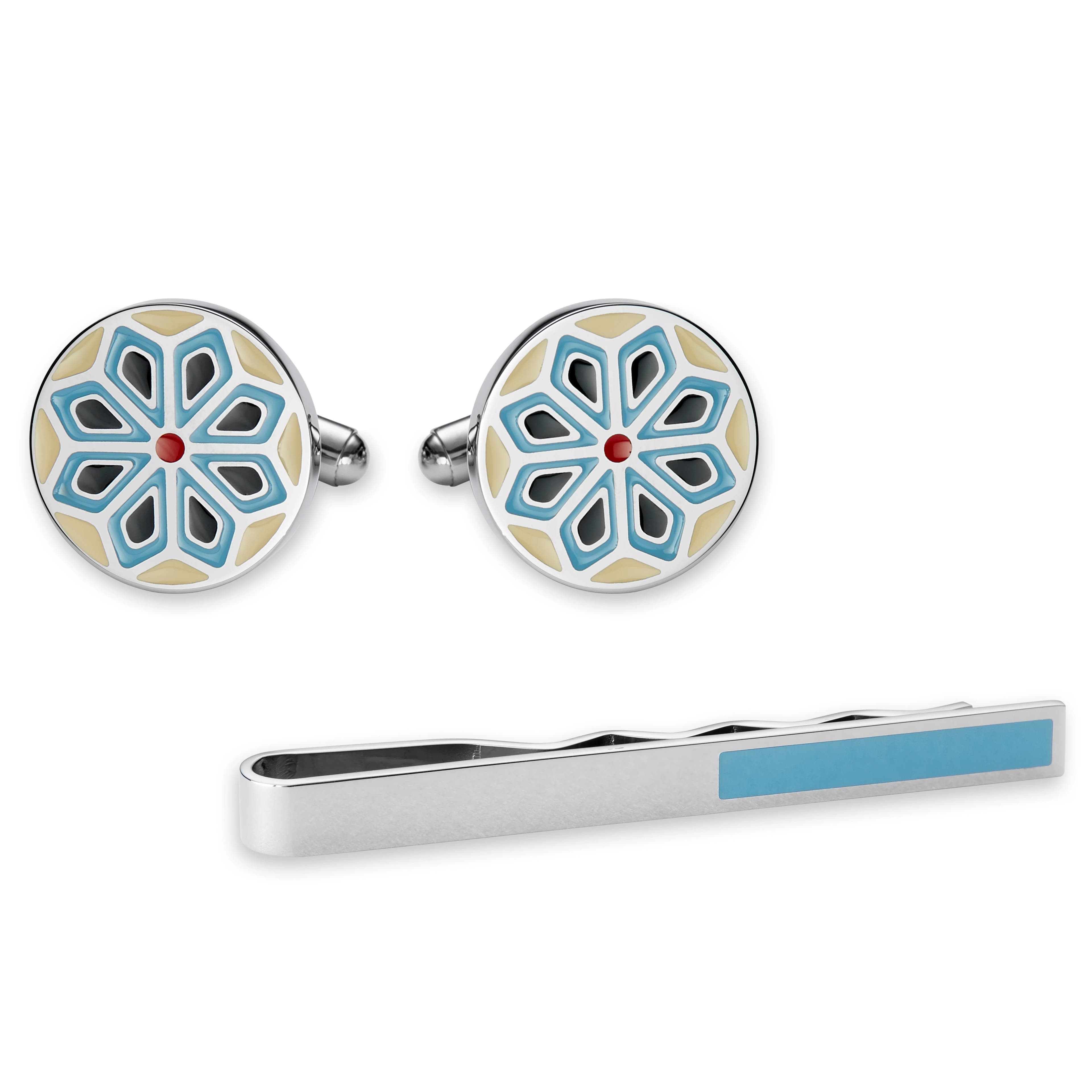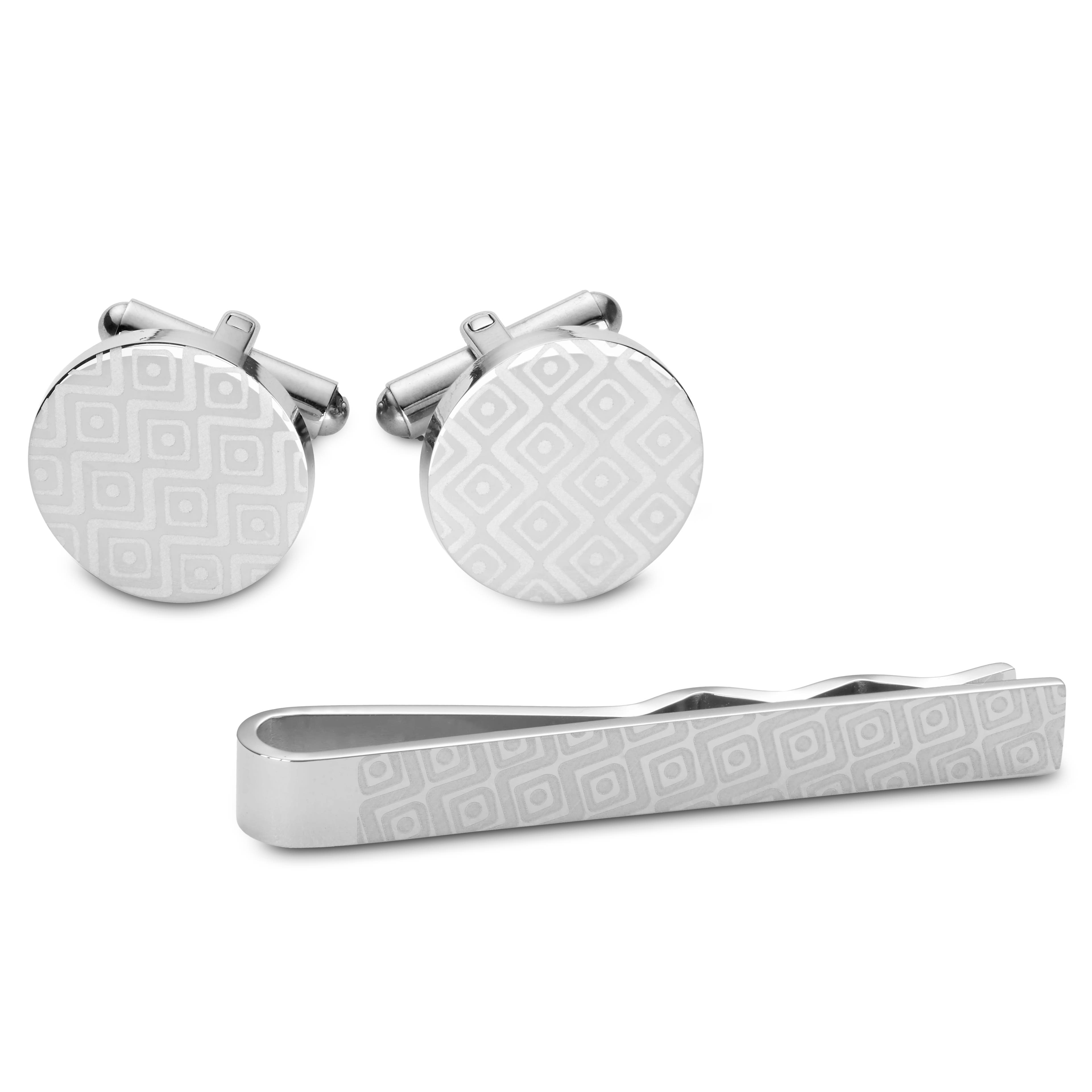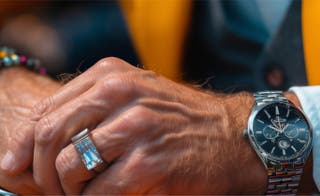
COLOR MATCHING IN A NUTSHELL
“Can I wear a yellow tie with an orange pocket square?”
“What about an olive green watch with a lime green bracelet?”
Sure. You can wear whatever you want. You’re an individual. You do you.
But, there’s a huge difference between defiantly challenging aesthetic norms like a true style rebel and clumsily tripping over them like an overenthusiastic toddler.
The difference is knowledge.
Join us as we dive head-first into the world of color theory and explore how to best create a cohesive look through contrast and complementation.

- Use the color wheel to coordinate colors.
- Choose color schemes that enhance your natural features.
- Match your accessories to your skin tone.

- Let accessories overpower your outfit.
- Mix too many bold colors.
- Forget that subtlety can be the most powerful statement.
BASICS OF COLOR THEORY
To make your outfit pop, your colors should harmonize.
This applies to everything you wear - from the dial on your watch to your tie and the color of your suit to your ascot. Accessories should enhance your look, complement your skin and hair tones, and draw attention to your best feature: that ruggedly handsome face of yours.
The key is balance. Your accessories should never overpower your outfit. When they do, they overshadow your natural attributes instead of highlighting them, leading to a cringy 'overdoing it' look.

MAKING YOUR COLOR WHEEL
Time to revisit primary school and brush up on the color wheel.
PRIMARY COLORS
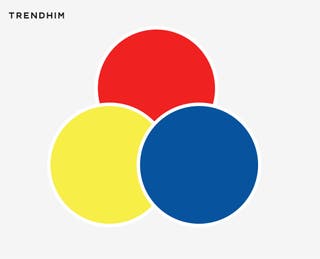
Red, Blue, Yellow. These are the base colors that can't be created by mixing others. They're vibrant and attention-grabbing, often used in patterns and motifs to stand out against darker backgrounds.
SECONDARY COLORS
.jpg?format=pjpg&auto=webp&quality=75%2C90&width=320)
Green, Purple, Orange. Created by mixing primary colors, they sit opposite a primary color on the wheel, offering maximum contrast. These complementary colors are eye-catching and bold.
TERTIARY COLORS
.jpg?format=pjpg&auto=webp&quality=75%2C90&width=320)
Vermilion (red-orange), Amber (yellow-orange), Chartreuse (yellow-green), Teal (blue-green), Violet (blue-purple), Magenta (red-purple). These are formed by mixing primary and secondary colors. Think of them as unique hues with their own distinct properties and complements on the color wheel.
COLOR SCHEMES
Understanding color schemes is crucial for mastering style with your textile accessories.
NEUTRAL COLOR SCHEME
.jpg?format=pjpg&auto=webp&quality=75%2C90&width=320)
White, black, or gray. These colors are versatile and pair with anything.
MONOCHROMATIC COLOR SCHEME
.jpg?format=pjpg&auto=webp&quality=75%2C90&width=320)
Using variations of a single hue. This creates a cohesive and subtle look.
ANALOGOUS COLOR SCHEME
.jpg?format=pjpg&auto=webp&quality=75%2C90&width=320)
Colors next to each other on the wheel, offering a harmonious yet slightly varied palette.
COMPLEMENTARY COLOR SCHEME
.jpg?format=pjpg&auto=webp&quality=75%2C90&width=320)
Colors opposite each other on the wheel. They provide strong contrast and are perfect for bold, attention-grabbing outfits.
TRIADIC COLOR SCHEME
.jpg?format=pjpg&auto=webp&quality=75%2C90&width=320)
Three colors evenly spaced on the wheel, offering a balanced and visually appealing combination with moderate contrast.
Square, tetradic, and split-complement schemes are advanced color schemes that should only be attempted once you've mastered the schemes above.
THE 6 LEVELS OF COLOR MASTERY
- BEGINNER – Classic White Pocket Square
Universally flattering and goes with everything.
- APPRENTICE – Neutral Colors
Grays, browns, and whites. Easy to match with any jacket or neutral tie.
- PROFICIENT – Monochromatic Schemes
Different shades of the same color. E.g., tan with beige for a subtle contrast.
- ADEPT – Adjacent Color Schemes
Pairing colors like yellow, amber, and orange for a cohesive yet varied look.
- VIRTUOSO – Triadic Color Scheme
Balances warm and cool tones for character without overpowering.
- SAVANT – Complementary Colors
The boldest choice. Think orange pocket square with a navy jacket, or a green ascot with a deep red blazer to make a statement.
Get the look
Upgrade your arsenal of style with a complete look
-affiliate_-r-o_male_-q1--2024-01-29-09-23-13--instagram_(1).jpg?format=pjpg&auto=webp&quality=100&width=3840)
MATCHING YOUR METALS & LEATHERS

- Match your metals (e.g., silver watch with a silver belt buckle, silver cufflinks, silver lapel pin, etc.).
- Mix metals if your statement piece (most likely your watch) is two-toned by design.

- Mix your leathers.
Get the look
Upgrade your arsenal of style with a complete look
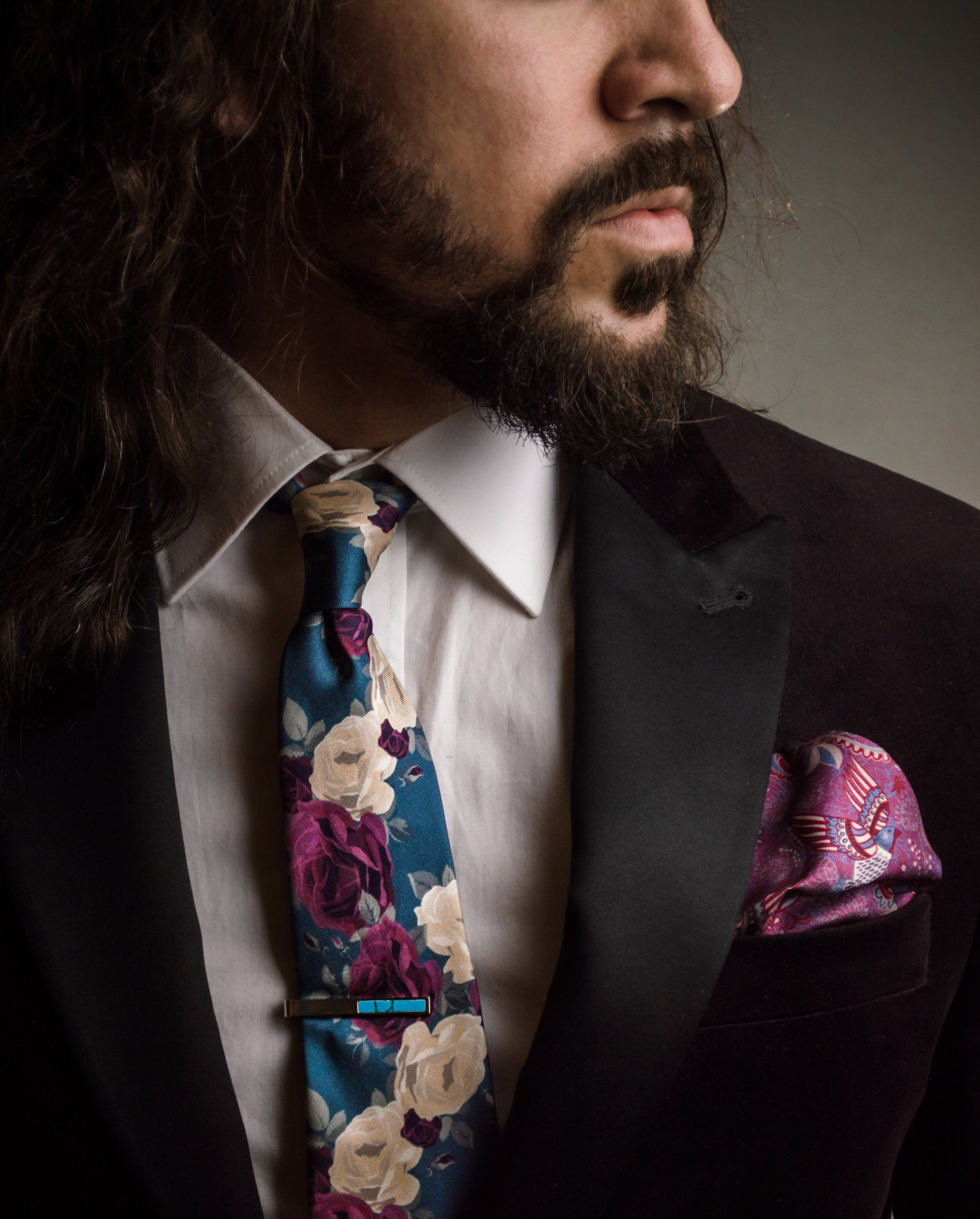
TAILOR TO YOUR STYLE
With these tips, you’ll master the art of coordinating your accessories, making every piece you wear a seamless part of your style.
To level up your style game even more, check out our ultimate guide to folding pocket squares and our step-by-step guide to tying next-level necktie knots.
And remember, accessories are for expression. You do you.

RELATED ARTICLES
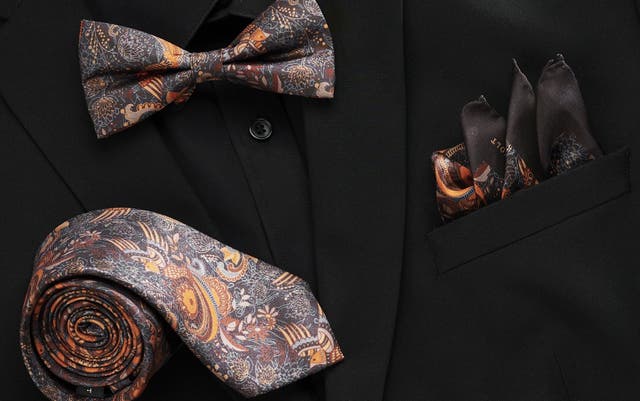
Your Guide to 7 Luxurious Suit Accessories | Look Like a Pro
Stand out from the crowd with luxurious suit accessories. Our guide takes you from cashmere ties to silk pocket squares, with a layover in 925s sterling silver tie clips and gold cufflinks. Enjoy the ride.
How to Wear a Bow Tie (And Wear It Well)
How to tie a bow tie: a step-by-step guide for getting yours right every time. Plus everything you need to know to wear one well – from pre-tied perfection to freestyle charm.
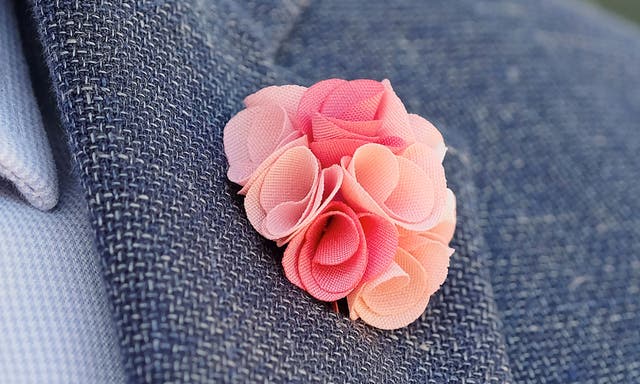
The Lapel Pin - Your Ultimate Guide
Learn everything there is to know about the lapel pin. From positioning, color matching, what to choose for events, and everything in between.

